*Just a warning that this is a (woolly) mammoth post with lots of words and even more pictures. Seriously, make yourself a cup of tea before you start…*
Living so far out of the way, I had never been to a knitting or wool festival before so I wasn’t really sure what to expect. When I first suggested to my husband that we fit a Woolfest detour into our holiday, it was all excitement: a full day of wool, sheep and knitting – what’s not to love? Although he isn’t a knitter, Alex does take an interest and is generally very tolerant of my need to visit wool shops / mills / sheep everywhere we go; and I knew there would be more than just yarn: there would be live demonstrations, plenty of sheep and – a soft spot for him and therefore the clincher – alpacas. So, I wasn’t really worried about dragging him along to a wool festival for the day either.
But, it’s funny how your confidence starts to waver as things get closer, and in the days leading up to the festival I found myself laying the foundations for disappointment. This is something my husband and I tend to do to each other when one of us is taking the other along to something that they’re not sure the other will enjoy.
For example, on our last holiday Alex insisted on a trip to a computer museum that, for days, I’d been assured was the ‘number one tourist attraction in Cambridge’. However, wandering through the barren industrial estate in which the museum was apparently situated; I could see Alex starting to backtrack on his enthusiasm. The further into the industrial estate we got, the louder his nervous mutterings of “it might not be that good…” became. (To give him credit, it did actually turn out to be quite good, if a little strange).
So, by the time we arrived in Cockermouth late on Thursday afternoon, I was starting to voice uncertainties of my own: “You know, I’ve never been to a wool festival before so I have no idea what it’ll be like – it might not be that good”; “I don’t know how big it’ll be – it might not take up a whole day”’; and even “I might’ve dragged us out to the Lake District for something that isn’t any good”.
Still, when I woke on Friday morning, nothing (not even the EU referendum result – lets not talk about that) could dampen my excitement.
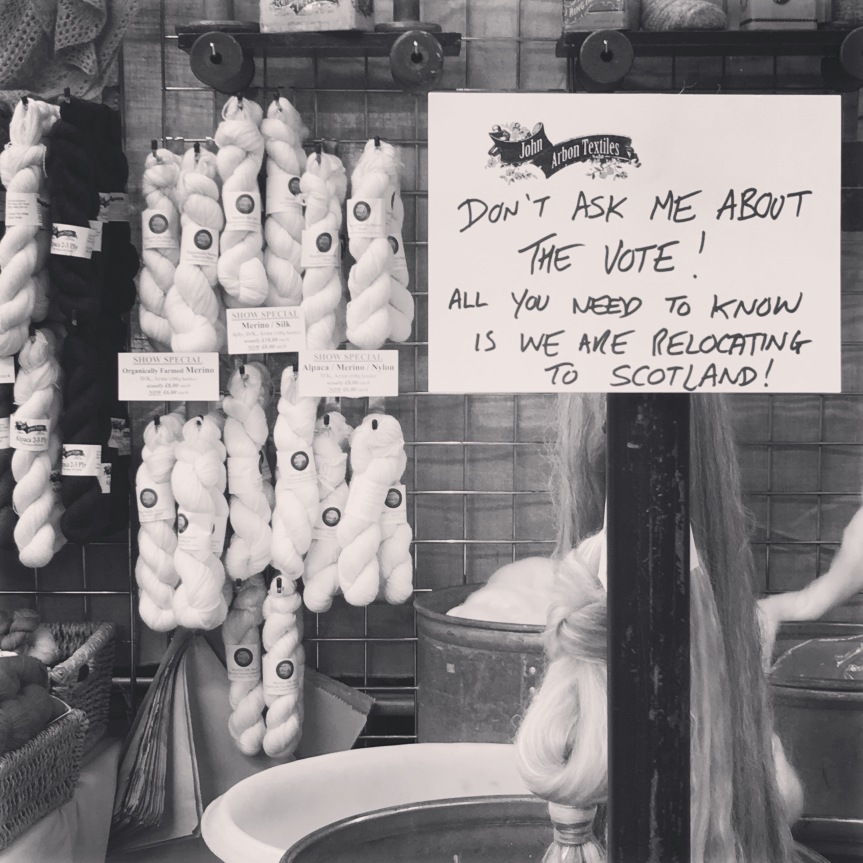
When we walked up the hill to The Lakeland Livestock Centre just before 10am, there was already a long queue forming: knitters, crafters and the occasional dog, all teeming with excitement, eagerly waiting for the festival to begin. Mild feelings of apprehension resurfaced as I scanned the queue and noted the average age must be about 50. I felt out of place and I wondered if Alex and I stood out.
But then the doors opened, we all filed in and any feelings of doubt left me as I realised that I wasn’t out of place at all: I was right at home.
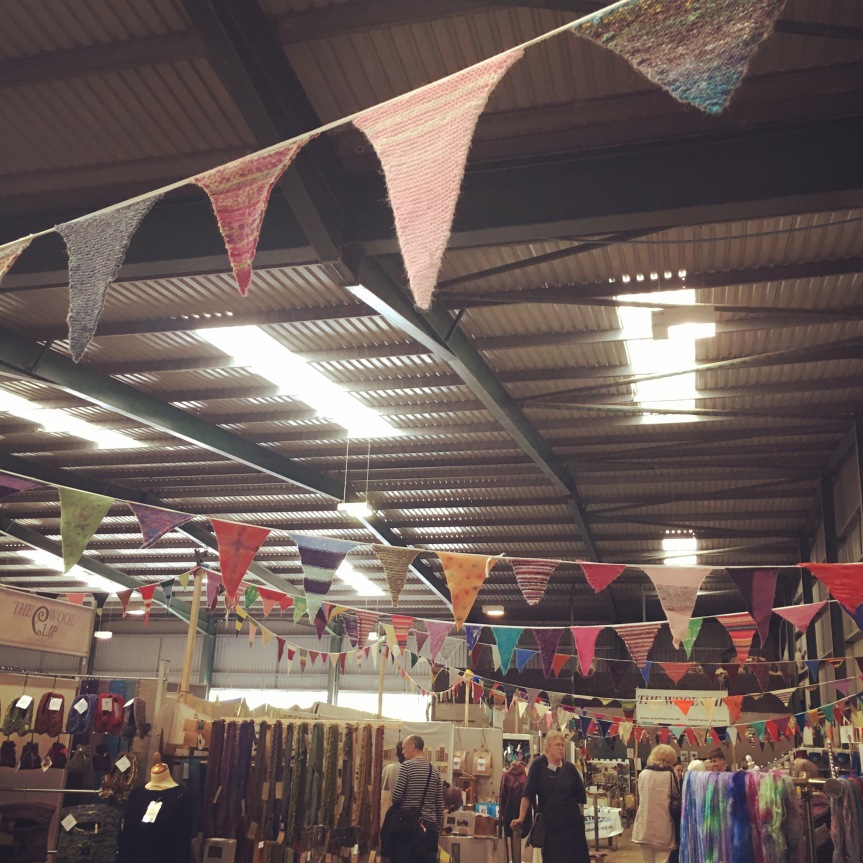
Entering the main hall, I was overwhelmed by the vast marketplace as row after row of neatly arranged and elaborately decorated stalls stretched out in front of me; each stall squarely contained within its own livestock pen, like a colourful sea of patchwork underneath a sky of knitted bunting.
As we were herded through the bustling crowds, I caught teasing glimpses of exquisite yarns of all colours; beautifully handcrafted drop spindles; canisters of brightly coloured wool tops; looms of intricately woven cotton; table tops littered with buttons; and clusters of nervous looking sheep… I didn’t know where to turn first.
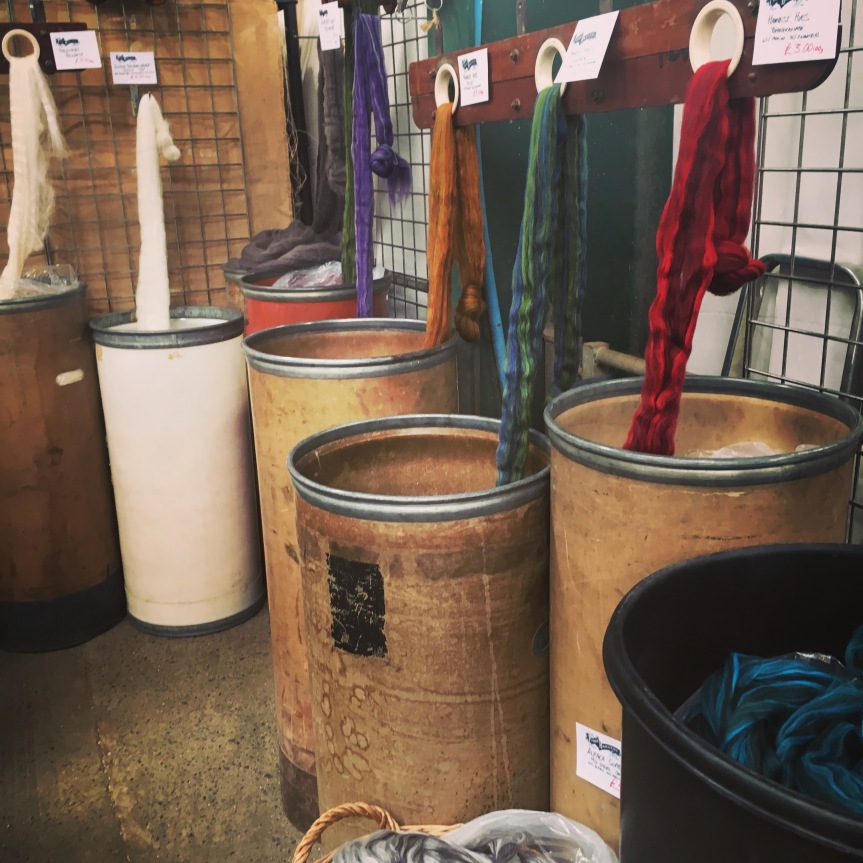
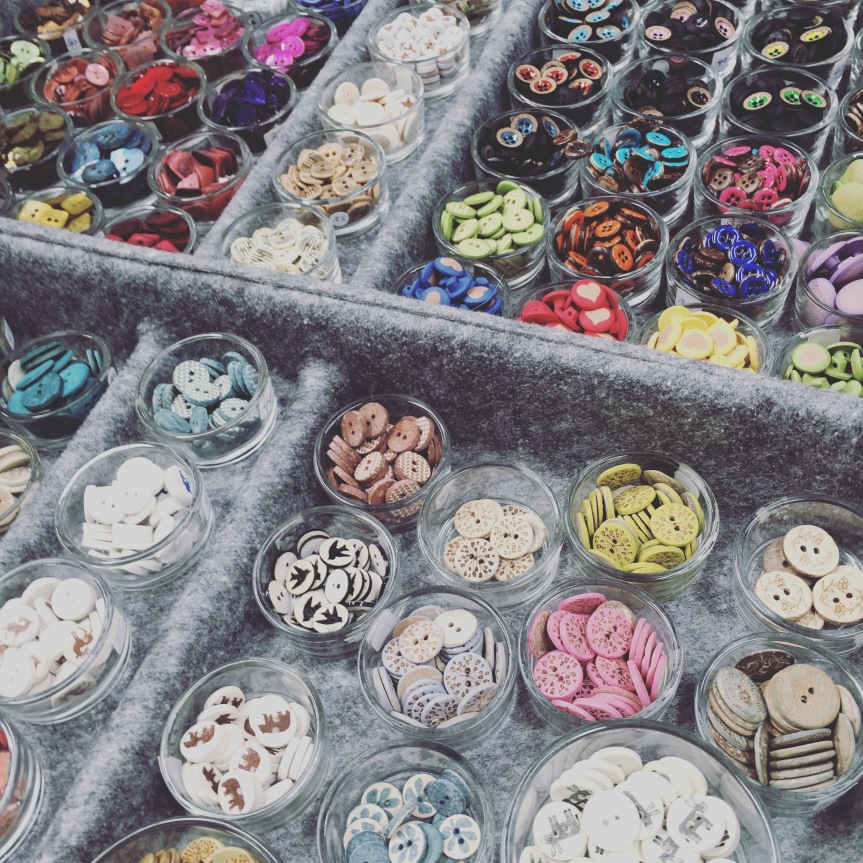
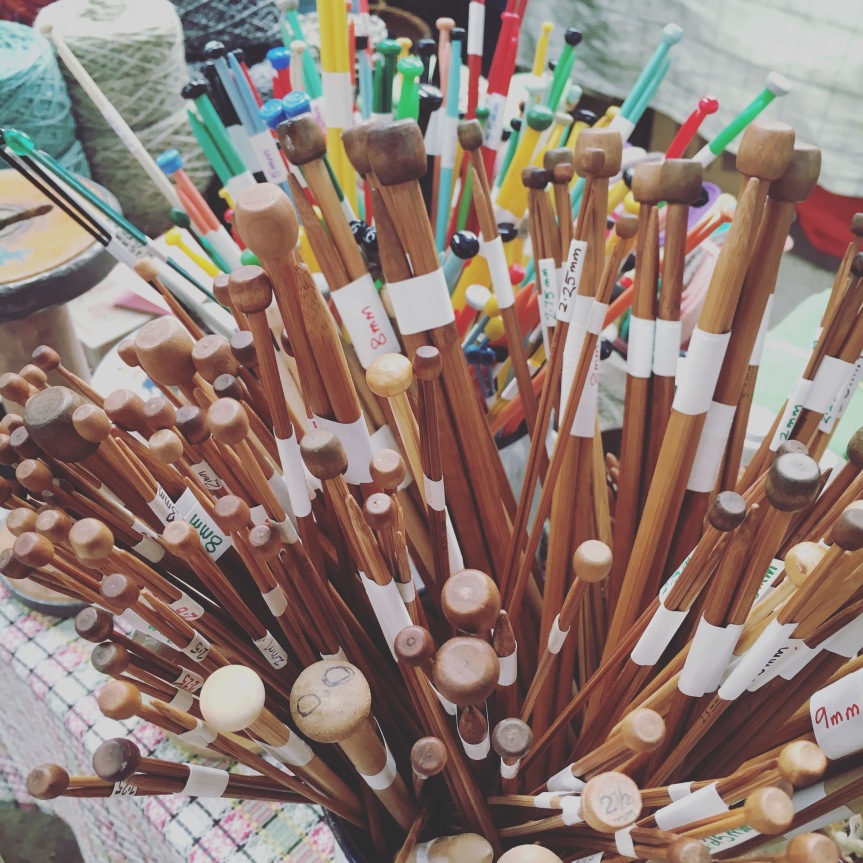
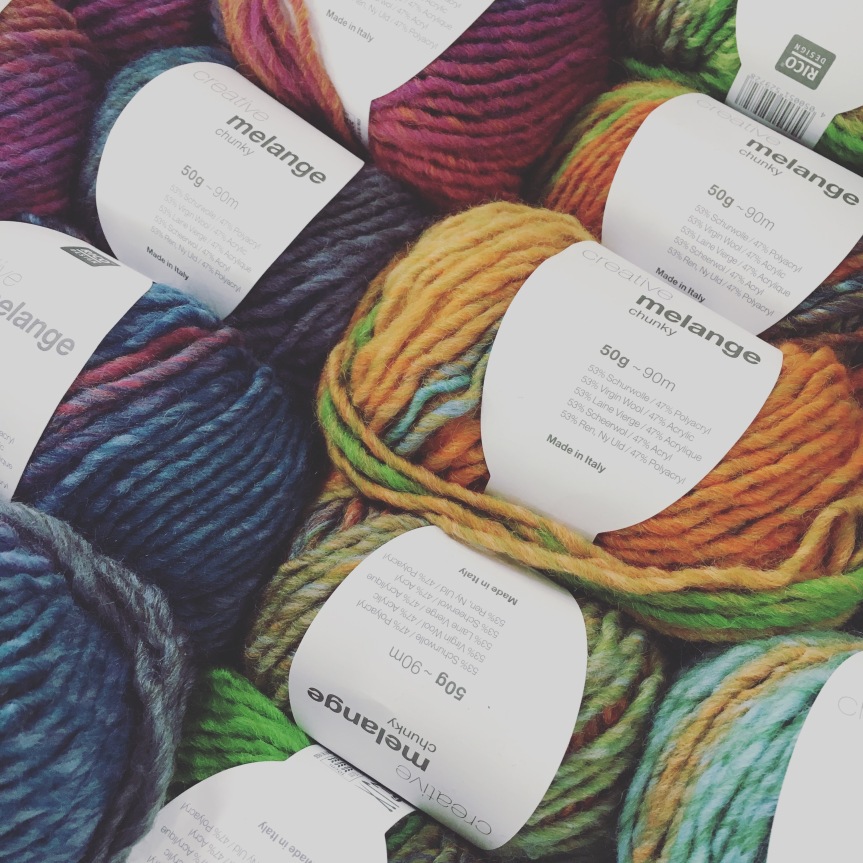
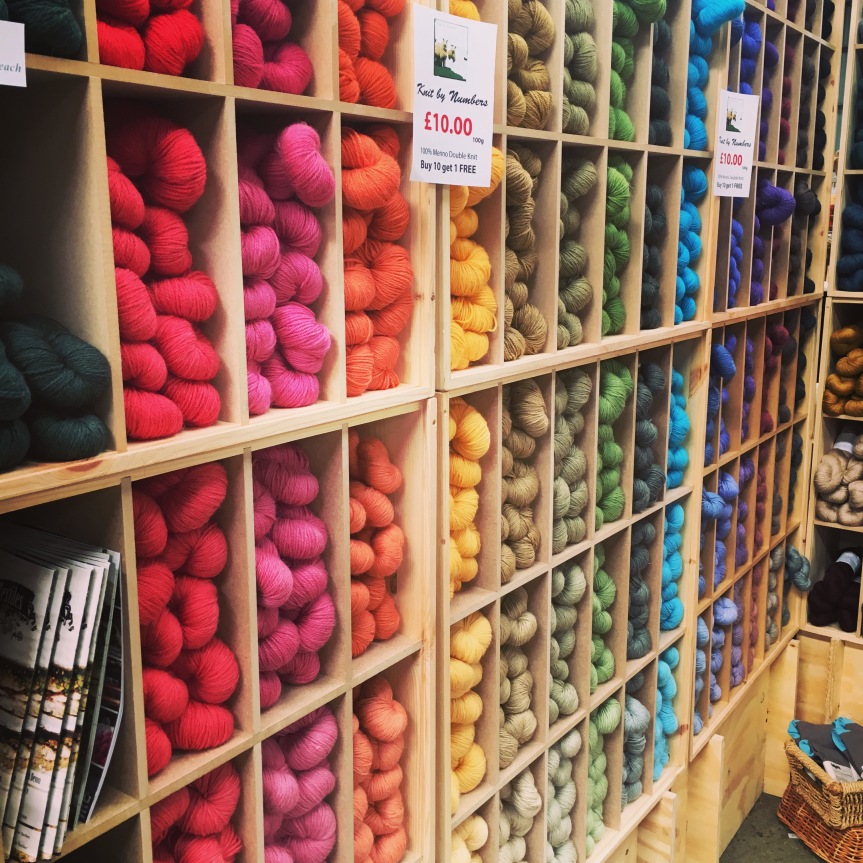
After wandering aimlessly for the first ten minutes, staring at everything in awe and failing to formulate any kind of plan, we abandoned any hope of taking a structured approach to the day and gravitated, naturally, towards the part that I couldn’t resist: the sheep.
THE SHEEP
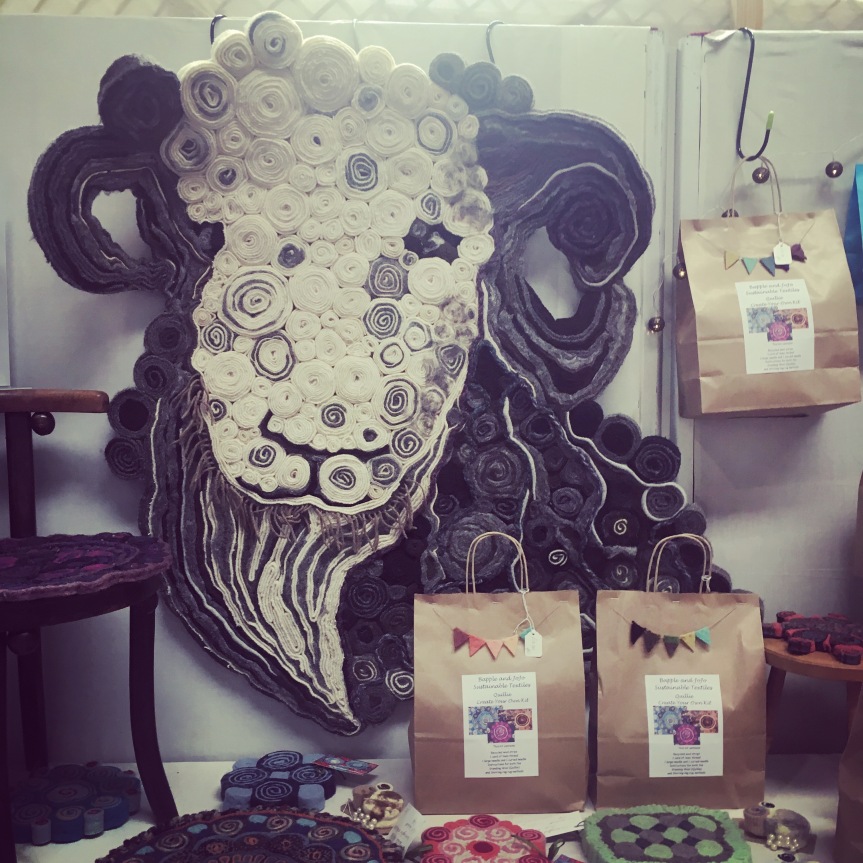
Anyone who knows me well will probably know that I love sheep. I light up like a small child whenever I get up close to sheep or lambs; and I have been known to visit petting zoos, which I’m sure are meant for children, just so I can have free reign to pat some sheep and melt over the lambs each spring (I’m willing to endure the mild embarrassment of asking for two adult tickets then wandering around a farm full of children without a child. It’s worth it.) So, needless to say, the sheep at Woolfest were always going to be a highlight for me.
I hadn’t really been sure what to expect sheep-wise: would there be lots of them? Would they all be together in one section? Would I be able to touch them? Would they be friendly?
As it happened, the sheep were mingled in with the rest of the stalls in the marketplace, such that you could be wandering down an aisle lined with stalls selling yarn, tops and other bits and pieces and stumble upon a small pen of sheep.
I found this to be particularly lovely, not only because it’s fun to come across sheep every now and then, but also because most of the sheep pens had an adjacent stall selling the yarn or rovings from that breed, which is a really nice way to see and learn about the fleeces of different breeds and the fibre and yarn they can produce.
This was also helped by the fact that there were several different breeds to look at…
When we first entered the main hall, I was immediately faced with a shy looking group of Herdwicks (of course – being in Cumbria, they had to have pride of place!)
They were nervously huddled together in a corner of their pen, which is how most of the sheep started the day; gradually becoming bolder and more outgoing as the day passed.
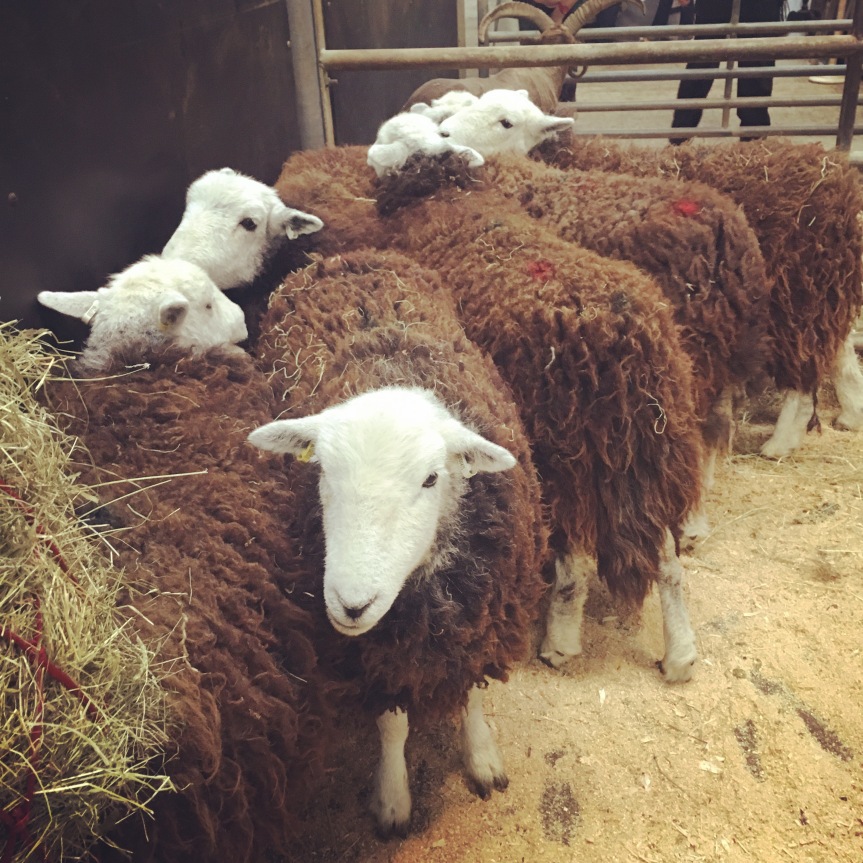
The exception was the two Ryeland, who had been hand reared and were therefore incredibly friendly right from the start. I think they were my favourite: aside from being cuddly and friendly, they also have the most amazing, thick fleece. They just look like giant, squishy clouds!
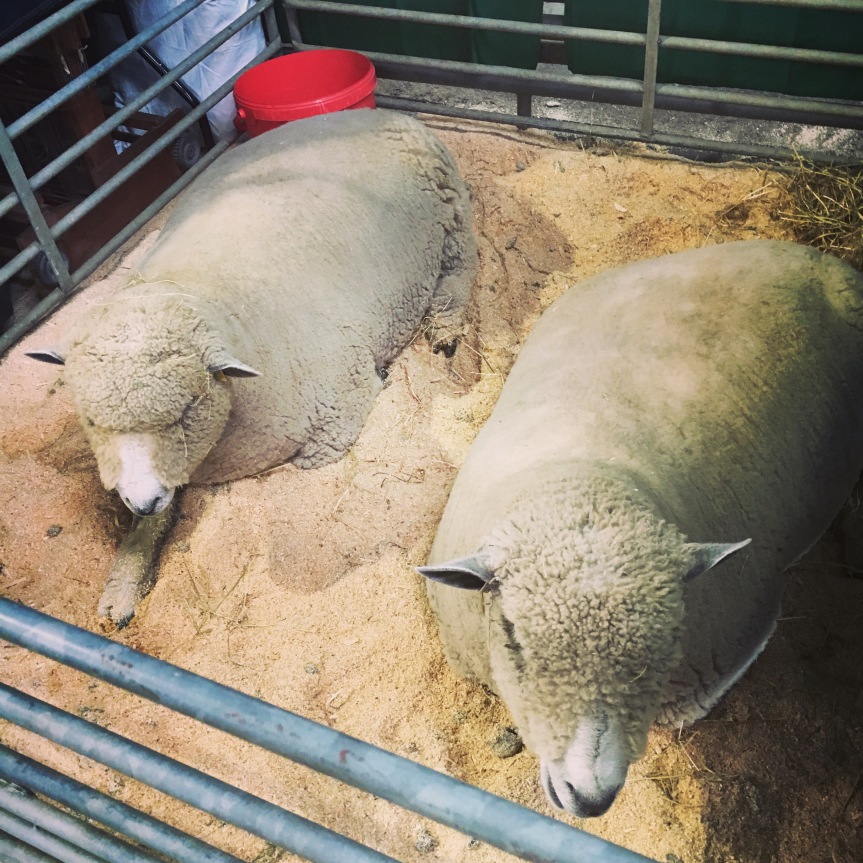
At the opposite end of the friendliness spectrum was Terry, an Exmoor Horn Ram who came with his own warning sign. He looked very lovely though.
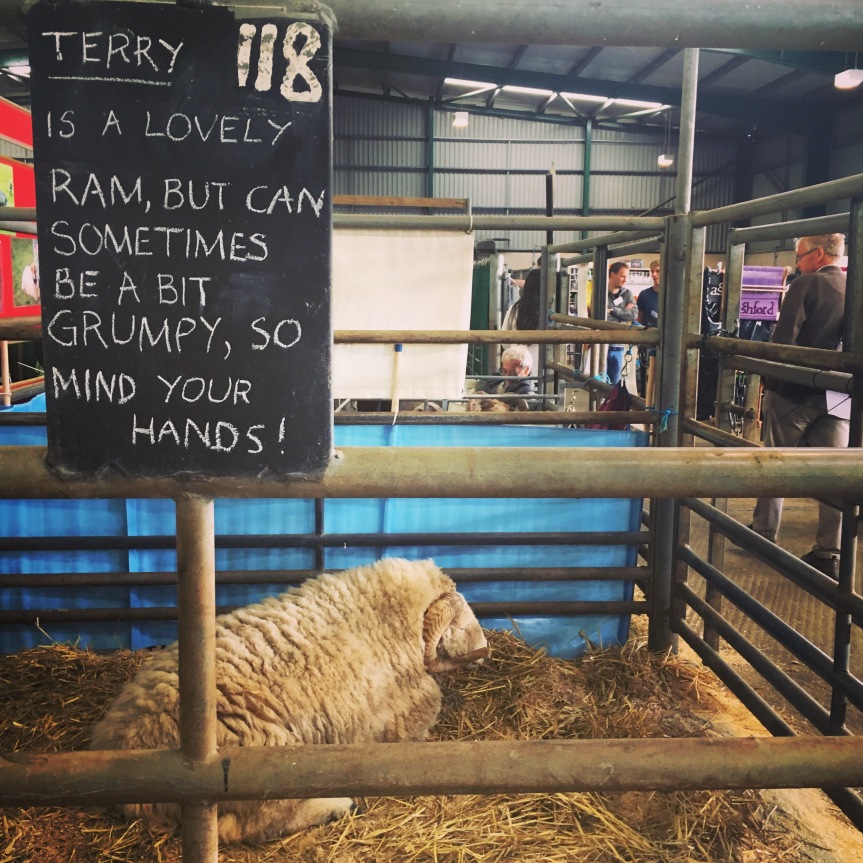
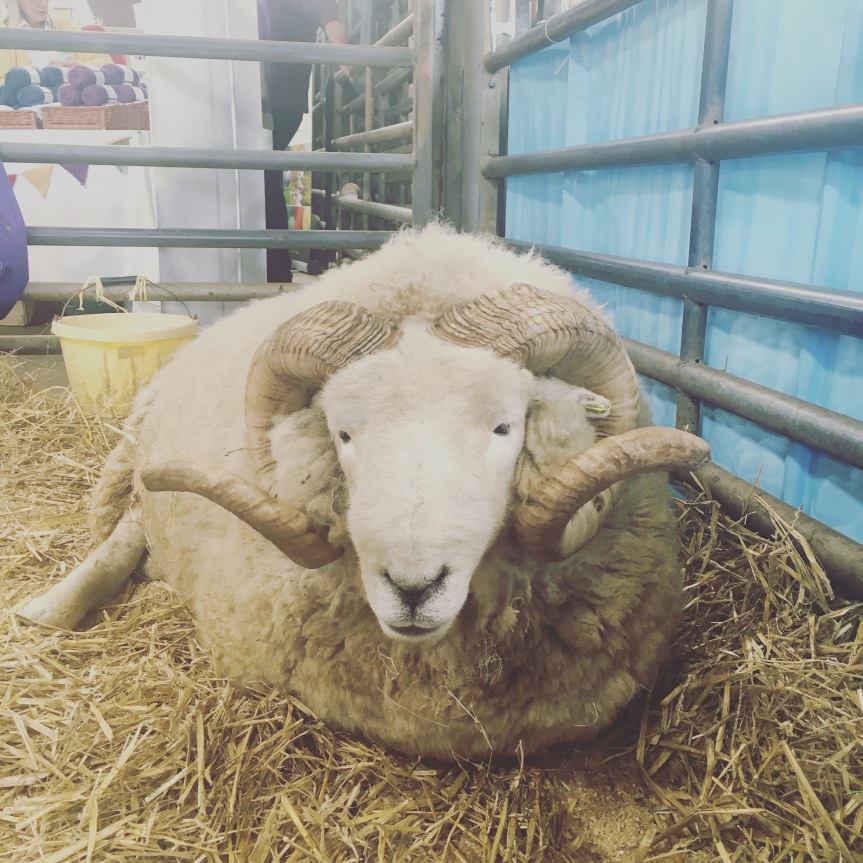
As we wandered down row after row, we came across many more: Bluefaced Leicester, Border Leicester, Castlemilk Moorit, Black Welsh Mountain, Gotland, Hebridean, Jacob, North Ronaldsay, Rough Fell, Shetland, Wensleydale and Swaledale, to name a few.
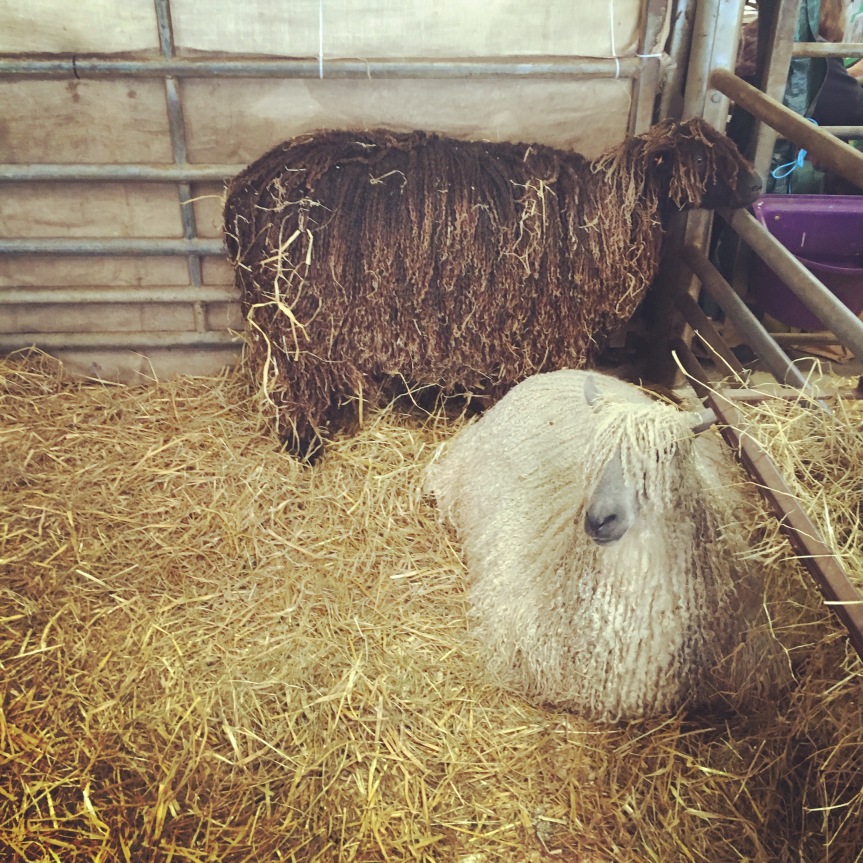
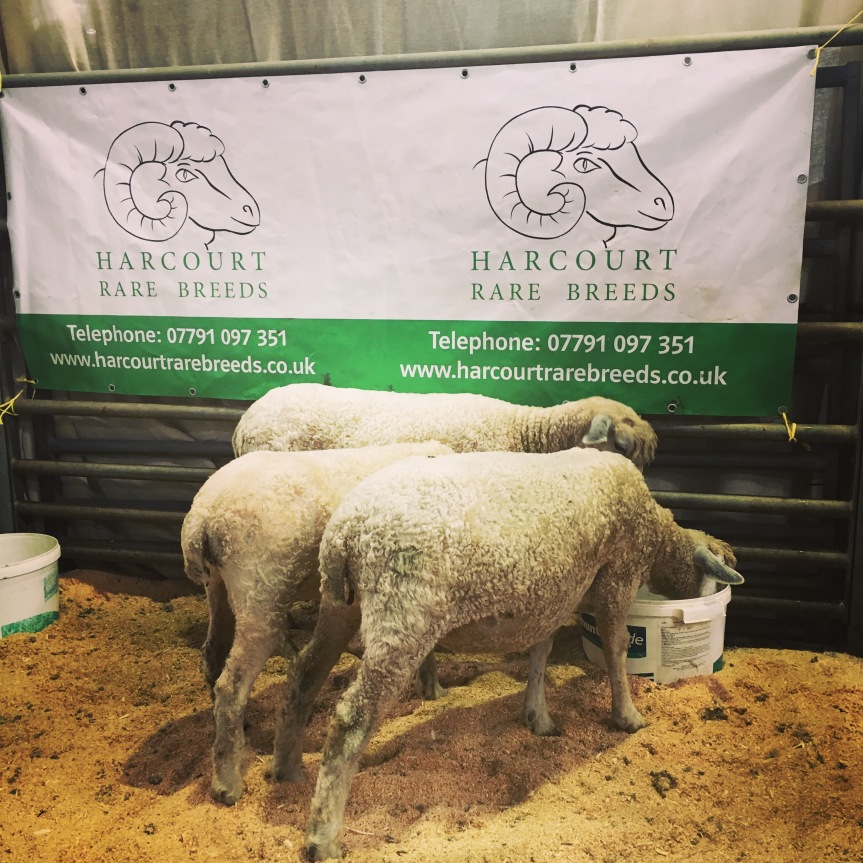
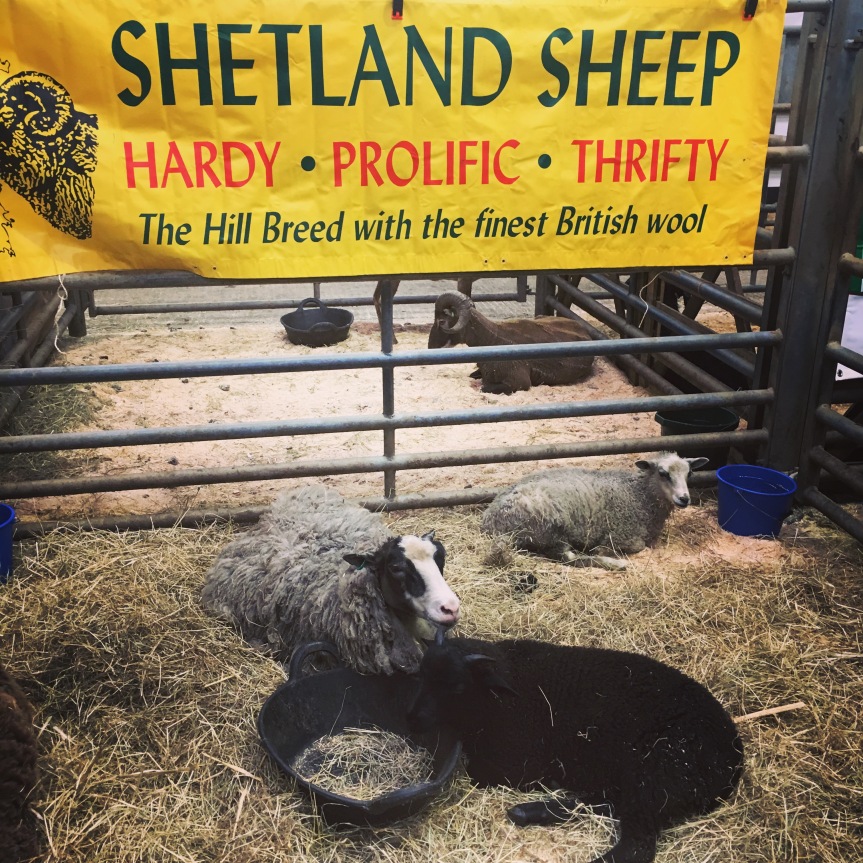
I had really been looking forward to seeing the Valais Blacknose Sheep, who were due to make an appearance, but unfortunately didn’t turn up in the end.
THE NOT-SO-SHEEPY
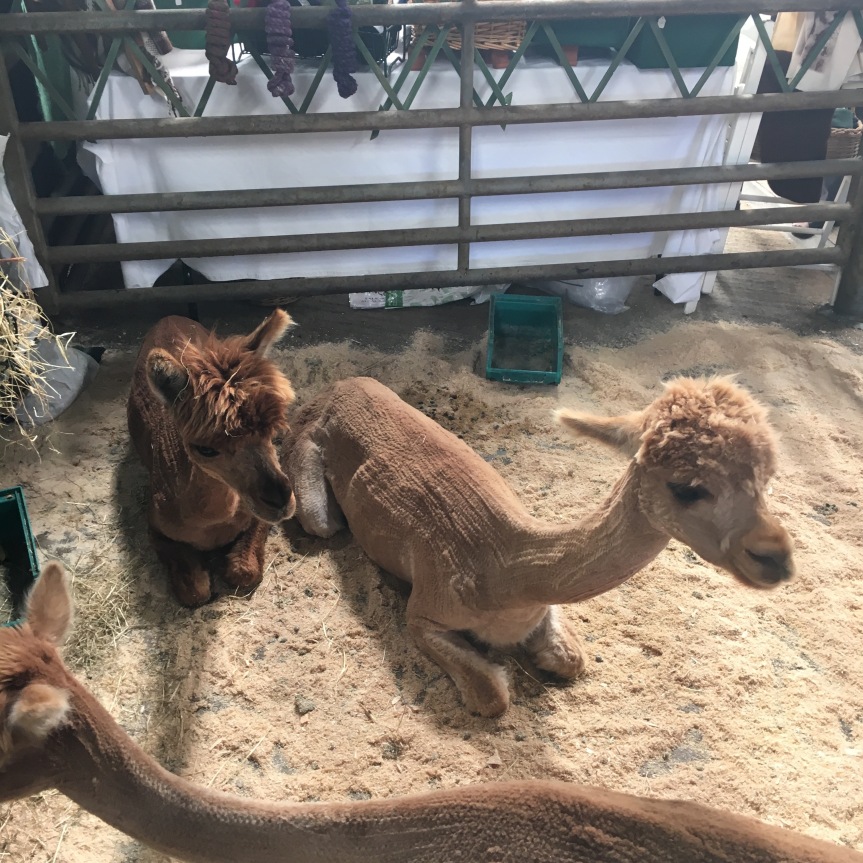
As well as sheep, there were a small number of Alpacas and Angora rabbits.
Alex has a particular soft spot for alpacas, so they were definitely a favourite for him. I enjoy working with alpaca yarn because it’s so soft, but I’ve never found them to be as friendly as sheep in personality; although they do look beautiful (if not a bit comical when they’ve been shorn like these ones!)
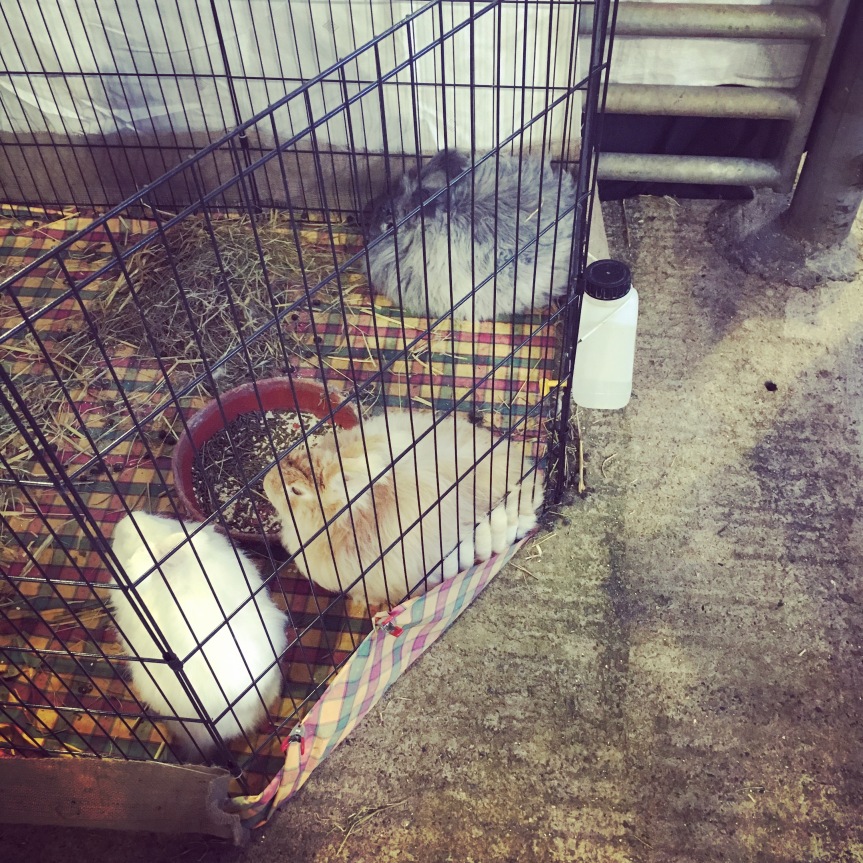
I hadn’t seen Angoras in real life before, so it was nice to have that opportunity. They are basically just cute little balls of fluff, so that was an enjoyable experience!
THE FLEECE
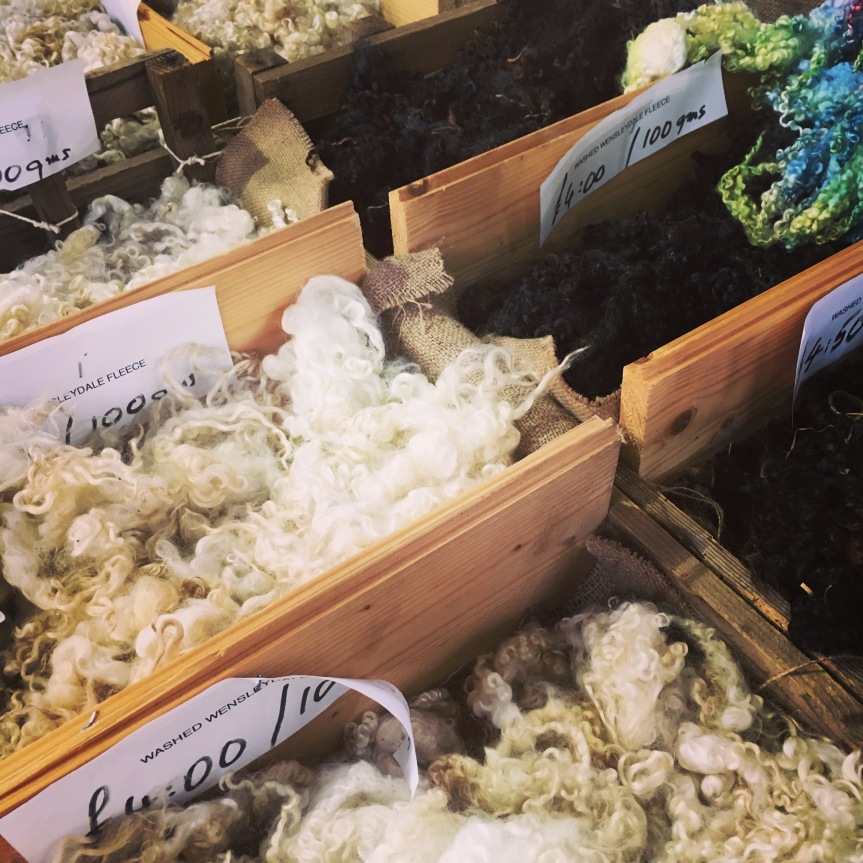
As a long-standing knitter, I have often toyed with the idea of branching into the wider woolly world of processing and spinning. I have always been fascinated by the idea of taking a raw fleece and going through the stages of washing, carding, spinning and dyeing so that I can follow the entire process from start to finish, knowing exactly where my yarn has come from.
This fascination has grown particularly since I met my husband: a Yorkshireman who, on our many trips to visit his family in West Yorkshire, has taken me to numerous textile mills and industrial museums which has allowed me to learn about the process on an industrial scale and see it in action on the old mill machinery.
There is something sad about the fact that so many of the old textile mills are now closed, and therefore most yarn is no longer produced in Britain. In fact, even the ‘traditional’ British yarn companies such as Rowan now tend to sell yarn spun abroad from fleeces sourced elsewhere. This leads to the much larger issue surrounding the economy of British wool and the current value of raw fleece as overseen by the British Wool Marketing Board; however, that’s perhaps a story for another day.
For now, suffice it to say there are numerous attractions to processing and spinning my own yarn; and therefore it seemed almost inevitable that I would come away from Woolfest with a fleece (or two, or three…)
In a corner of the main hall, a dedicated Fleece Sale is set up: stacks of bulging plastic bags with fleece spilling out of the top; all colours, shapes and sizes, just waiting to be inspected, claimed, and taken home.
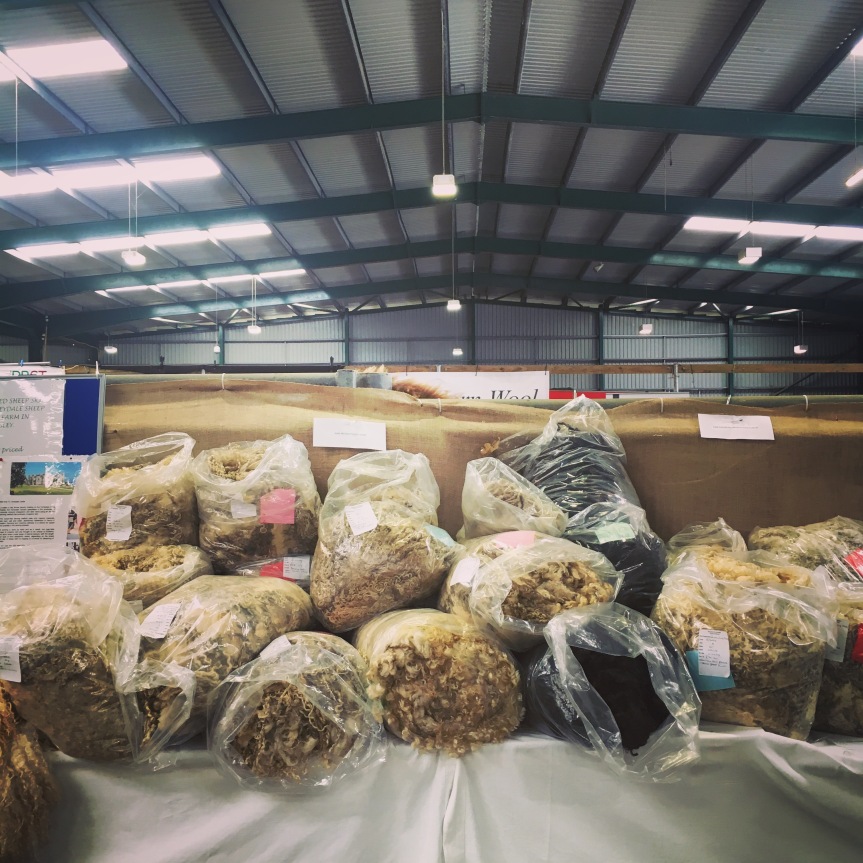
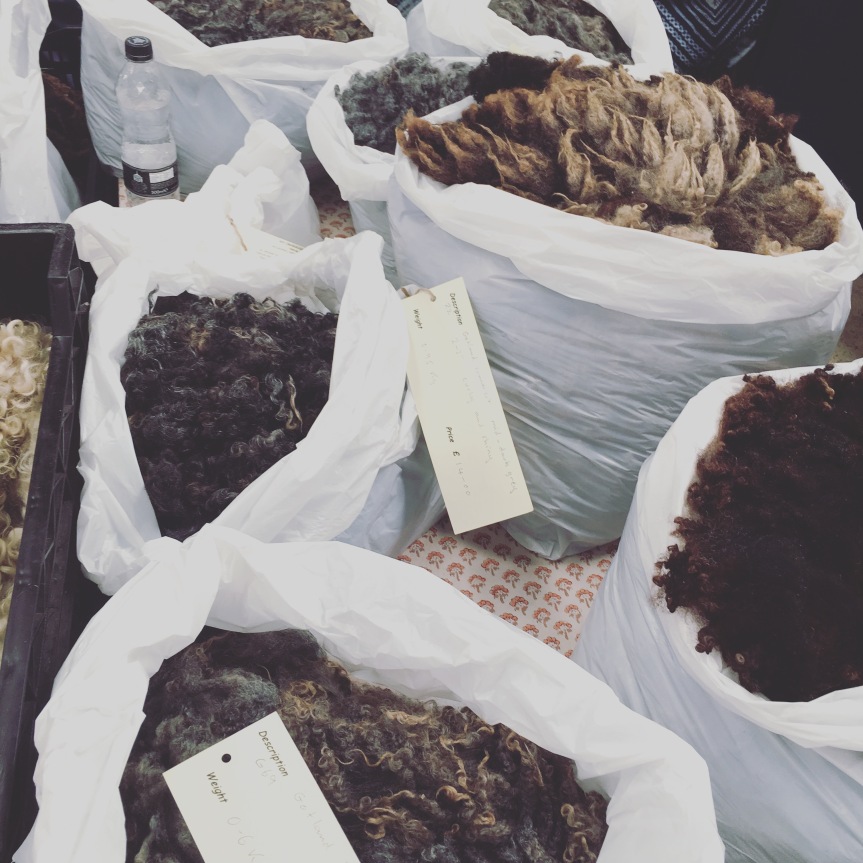
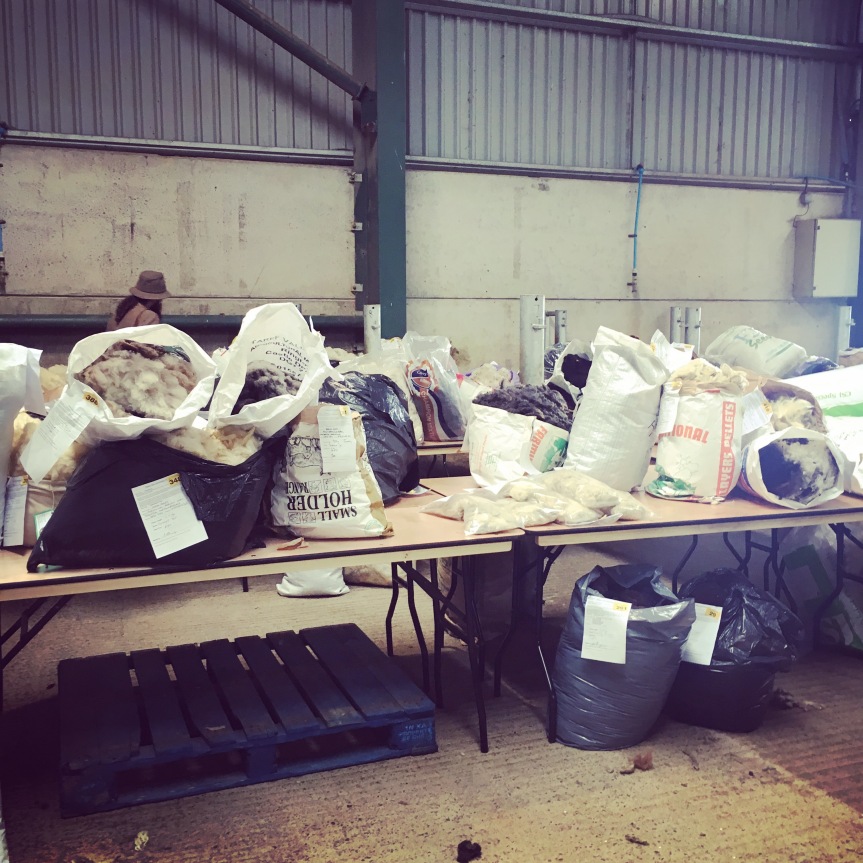
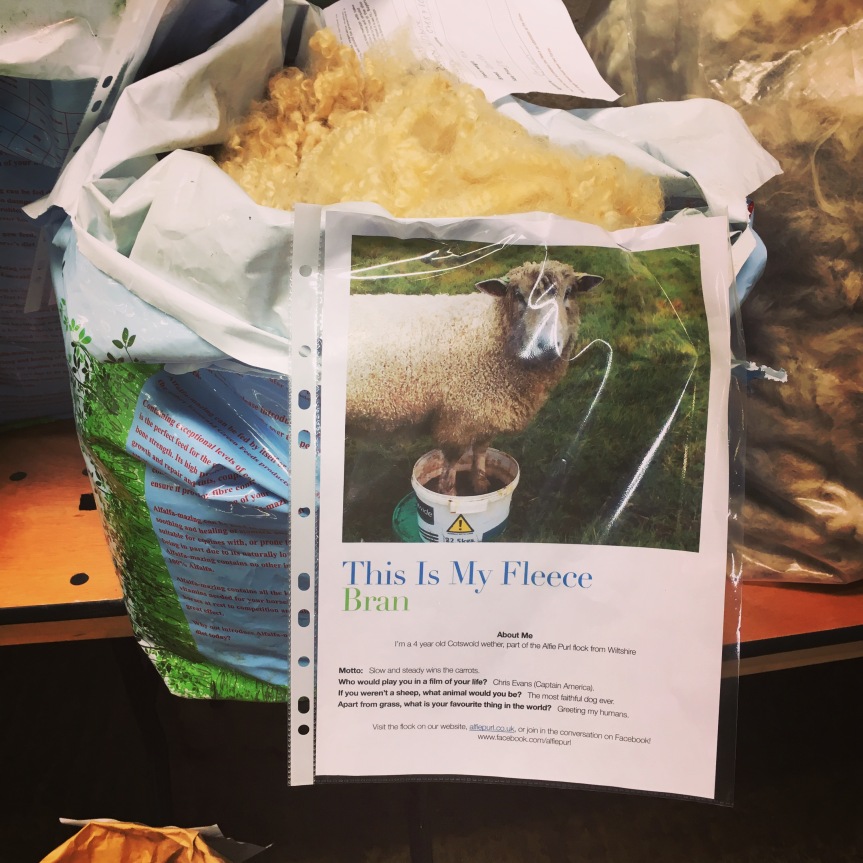
For the untrained eye, this sight is somewhat overwhelming: where do you start? How do you choose a good one?
Luckily, Sue Blacker of Blacker’s Yarns was due to deliver a workshop on Fleece Selection and Sorting in the morning so we decided to start there, which turned out to be a wise decision. Sue took a random selection of fleeces from the Fleece Sale and talked us through each of them, closely inspecting them, and pointing out the good and bad features; letting us handle the fibres and feel the differences, and showing us how to judge the overall quality of the fleece and whether it’s worth the price tag.
Heading back to the Fleece Sale with a newfound confidence, we spent some time carefully looking at the fleeces, taking them out of their bags and inspecting them as we’d been shown; before selecting two fleeces: a mixed Jacob and a jet black Hebridean, which we purchased for about £10 each.
On our way to the wool crèche (yes, there was a wool crèche for leaving your woolly purchases!) I was then tempted by a massive 3kg creamy white Ryeland fleece, which we bought directly from the Ryeland stallholder for £25.
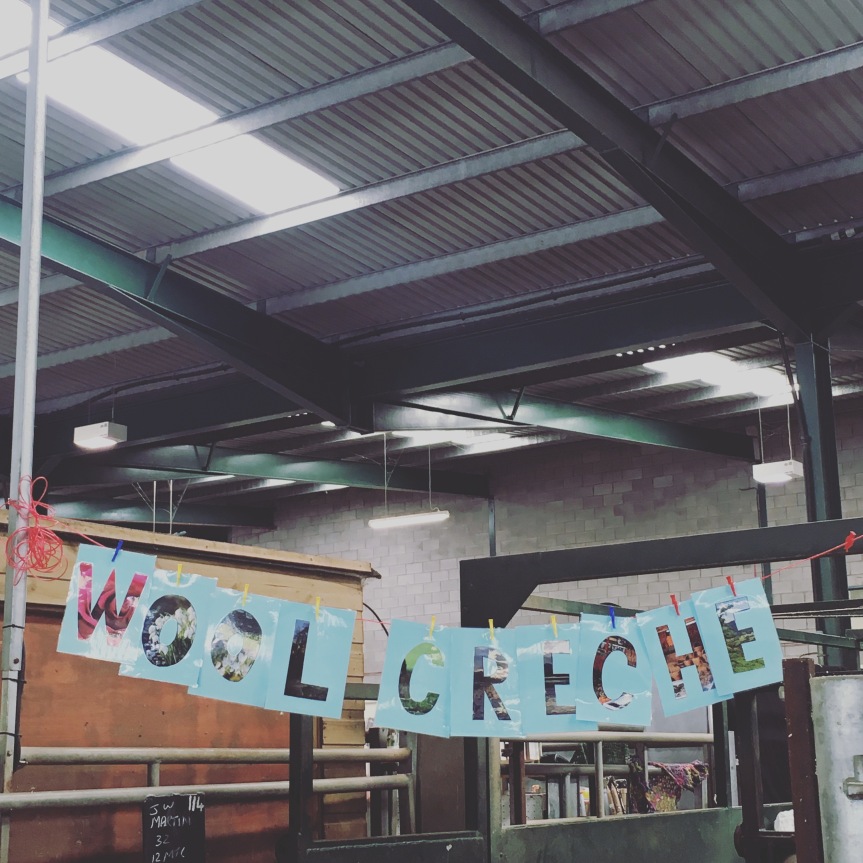
Then there was the unexpected fleece; the impulse purchase and yet, in my opinion, the best one: the Herdwick.
It was in the afternoon, after we’d bought our three fleeces and decided that was enough. We decided to go along to Cathy Cassie’s sheep shearing demonstration (which, by the way, was excellent, and definitely one of my highlights).
Cathy was shearing three young Herdwicks; they were just lovely. They peered out of a small pen in the centre of the main ring as the growing crowd looked on in anticipation; the chatter punctuated by the occasional nervous ‘baa’. Cathy demonstrated shearing first with traditional hand clippers, then with the modern electric sheep shears. As she worked, she shared stories of her work and snippets of information about sheep shearing and the value of raw fleece.
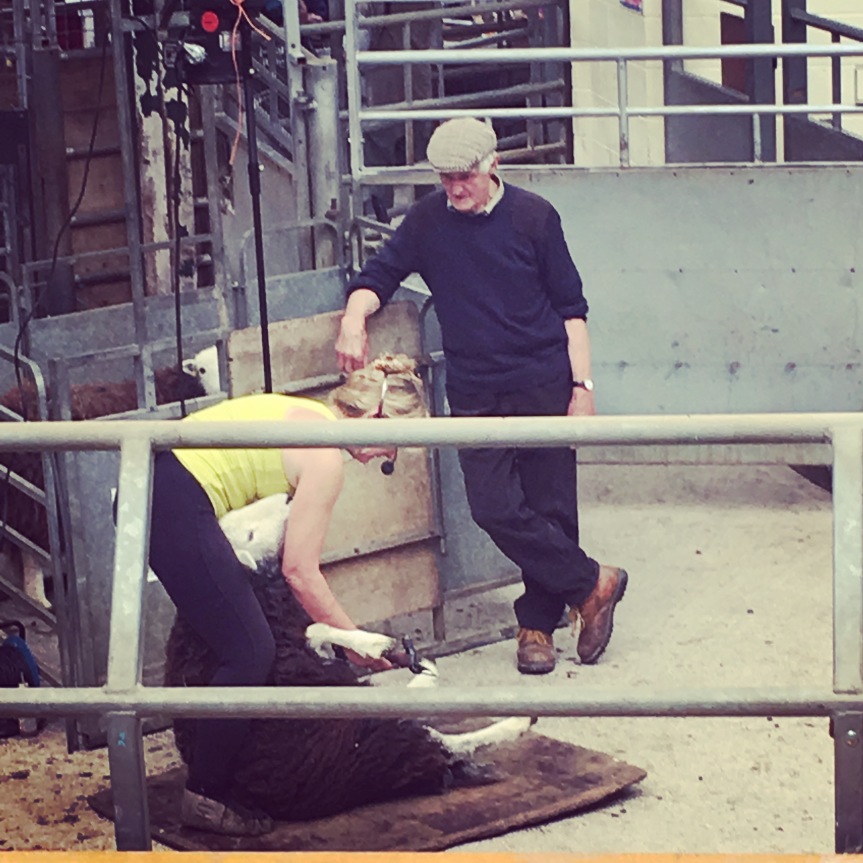
Then, making an appeal for a fair price to be offered, Cathy held up the first freshly shorn fleece, rolled neatly into a ball, and asked ‘Who wants it?’
My ears pricked up; I hesitated. I whispered to Alex: ‘Do you think we should try and get one of those?’ He nodded, and we both started scrambling in pockets for spare cash. Someone called out; the first fleece was gone. Cathy held up the second, and someone offered £5; we hesitated a minute, then Alex shouted ‘I’ll give you £10’ – and we had it.
He ran down to the ring and, in front of the crowds, handed over the money and took the thick, rolled up fleece; rich black-brown in colour, straight off the sheep’s back, and without a bag of any sort.
Leaving the main ring, I felt exhilarated: to have watched the sheep being shorn, and to have taken the fleece there and then, knowing exactly where it had come from – it felt special somehow.
Walking past the Herdwick stall later in the afternoon, we spied the three freshly shorn sheep; safely back in their pen, several pounds lighter and cautiously crowded together, hesitant after their first shearing ordeal. I smiled knowing that one of their fleeces was now mine; bought for a fair price, destined to be made into beautiful yarn and put to good use. Thank you, lovely Herdwick.
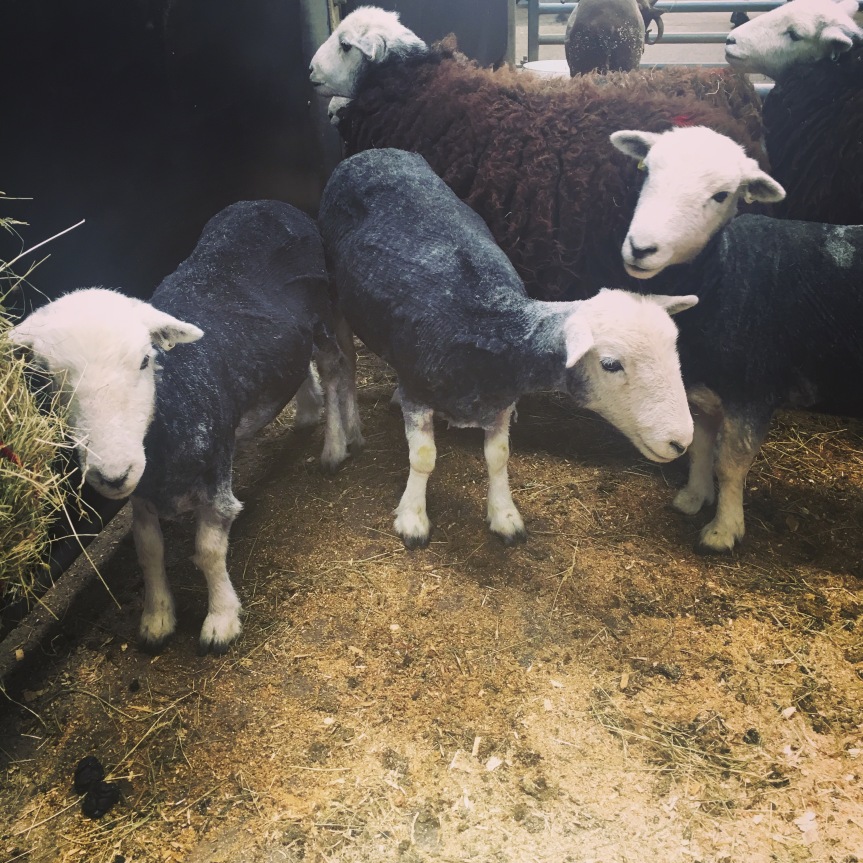
Four fleeces later, I’d say we had a successful first fleece-buying experience, and I look forward to going through the process of turning them into yarn; learning as I go. Watch this space for progress… (and in the meantime, have a laugh thinking about our five hour drive home to Scotland in a Fiat 500 with four sheep fleeces crammed into the boot and a very sheepy smell!)
Across the two days of the festival over 500 fleeces were sold, raising over £5,000 for British farmers and breeders.
THE STALLS
Although I can try and portray how overwhelmed you feel when you walk into a wool festival like this to be faced with so many stalls and so many amazing, woolly things to look at; with somewhere in the region of 150 stallholders present at Woolfest, I can’t begin to sum up everything that I saw.
The breakdown of my purchases below – a very limited and restrained selection of the things I loved most, even if it doesn’t look like it! – gives an idea of my favourites, but there really were some lovely things that I had to pass up because, well, I couldn’t take everything home.
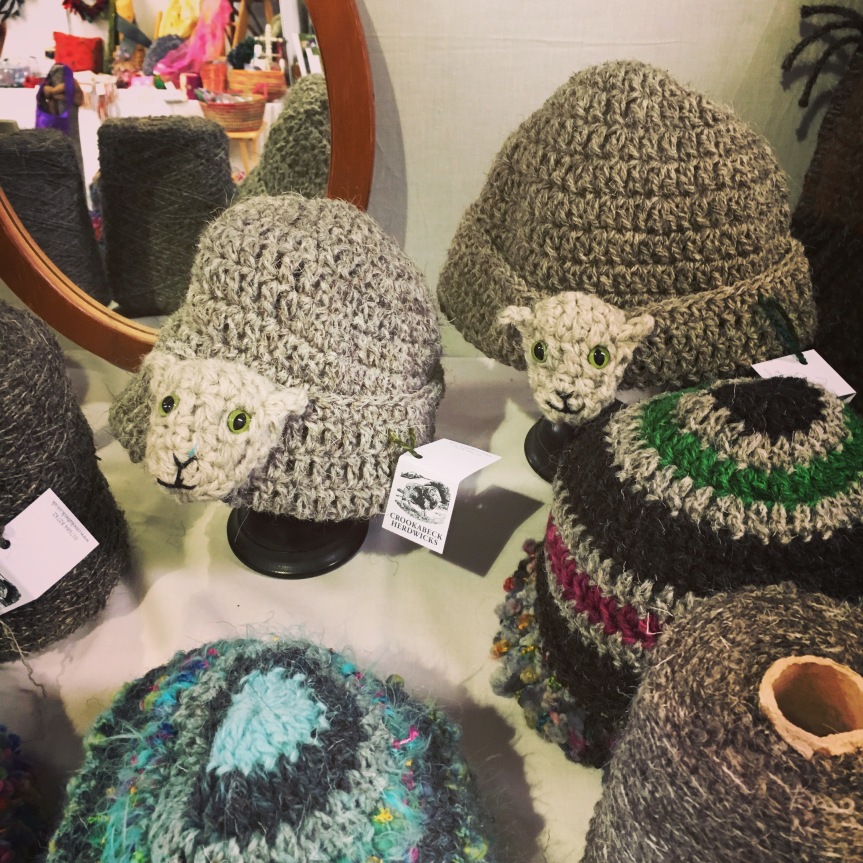
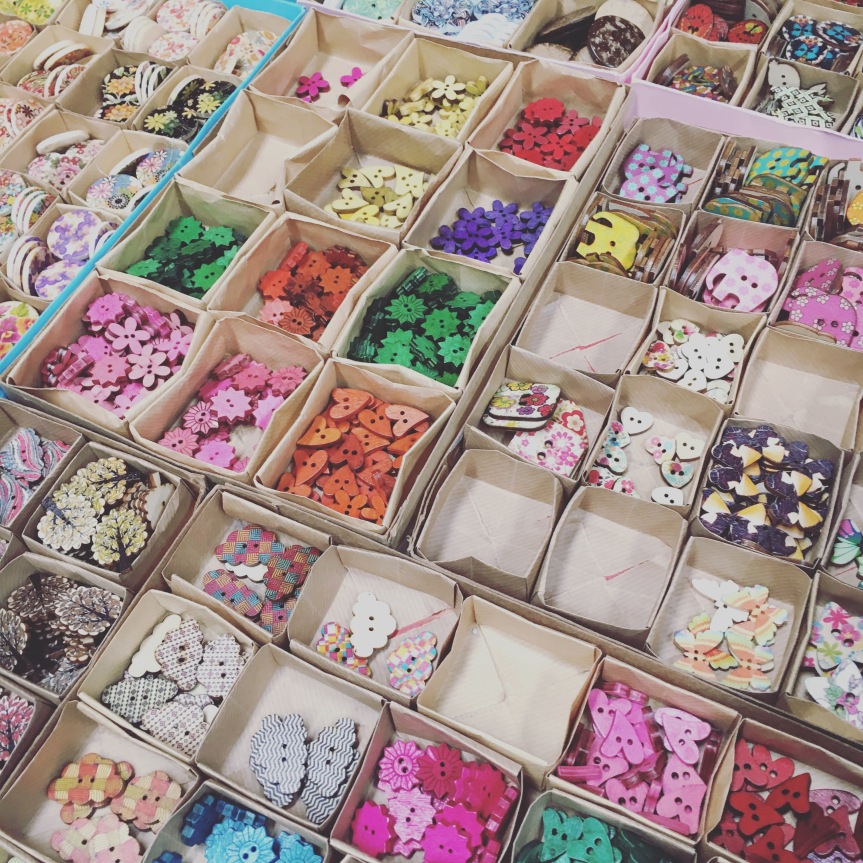
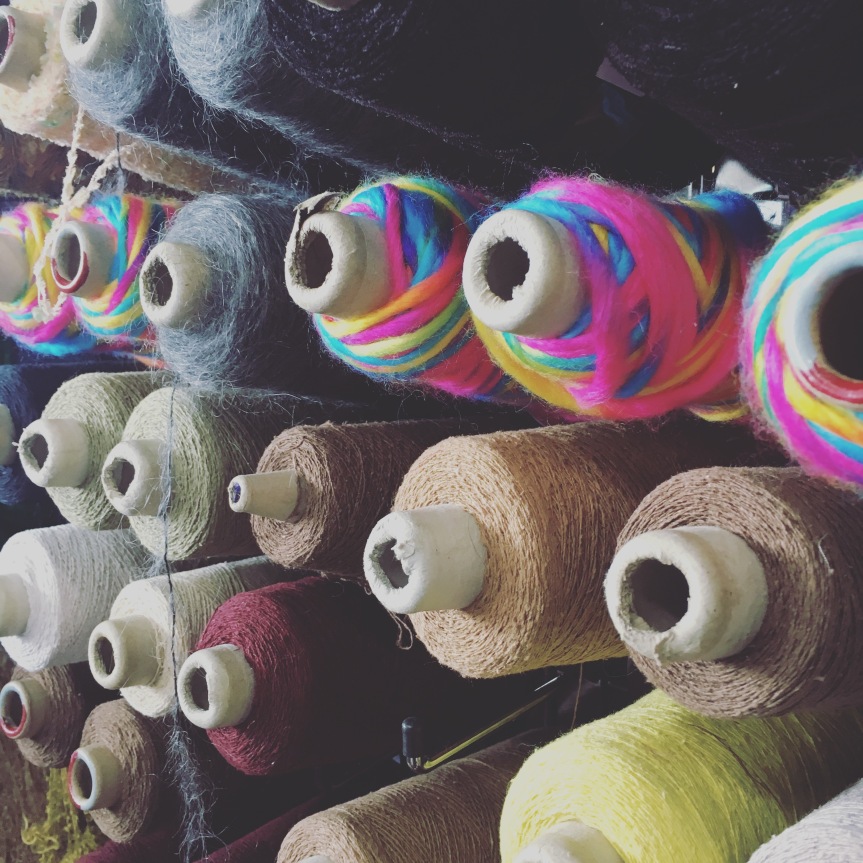
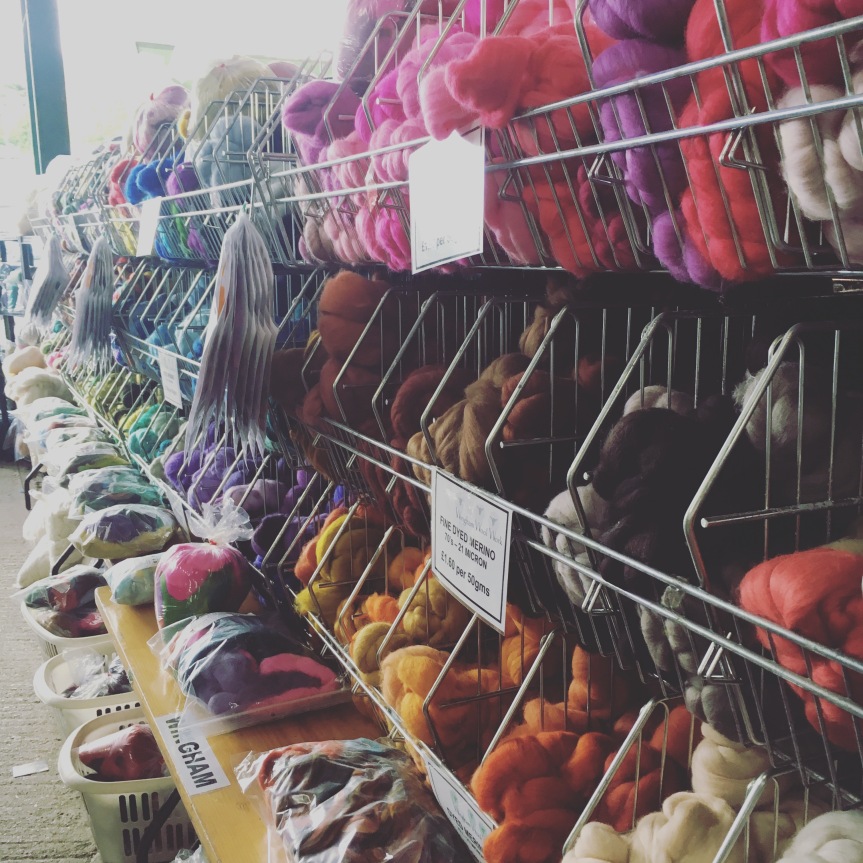
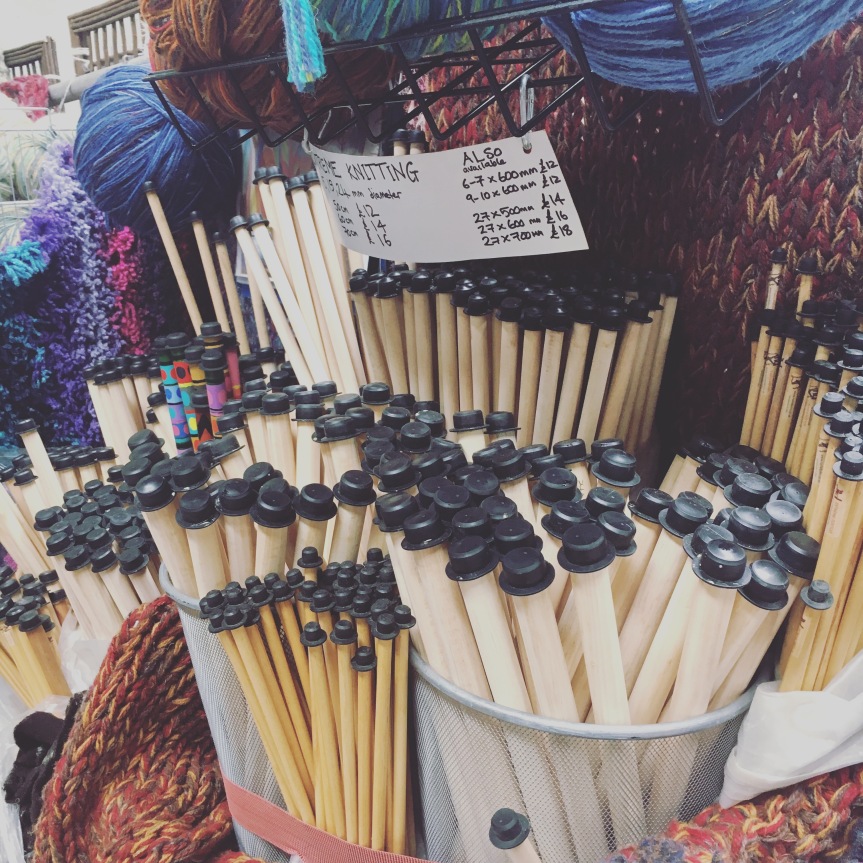
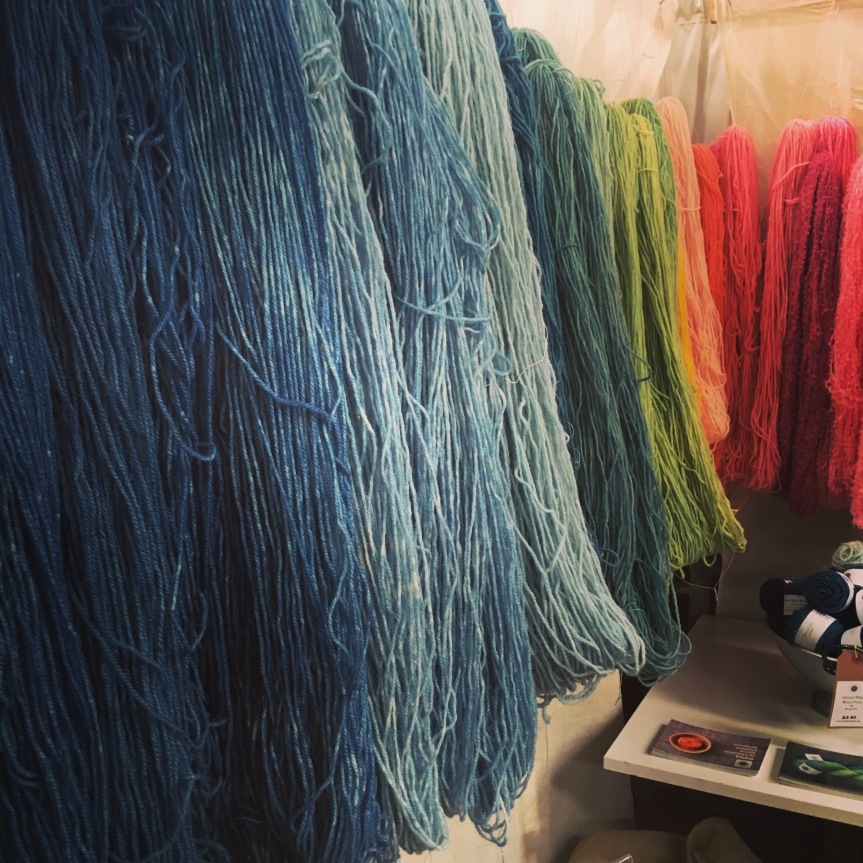
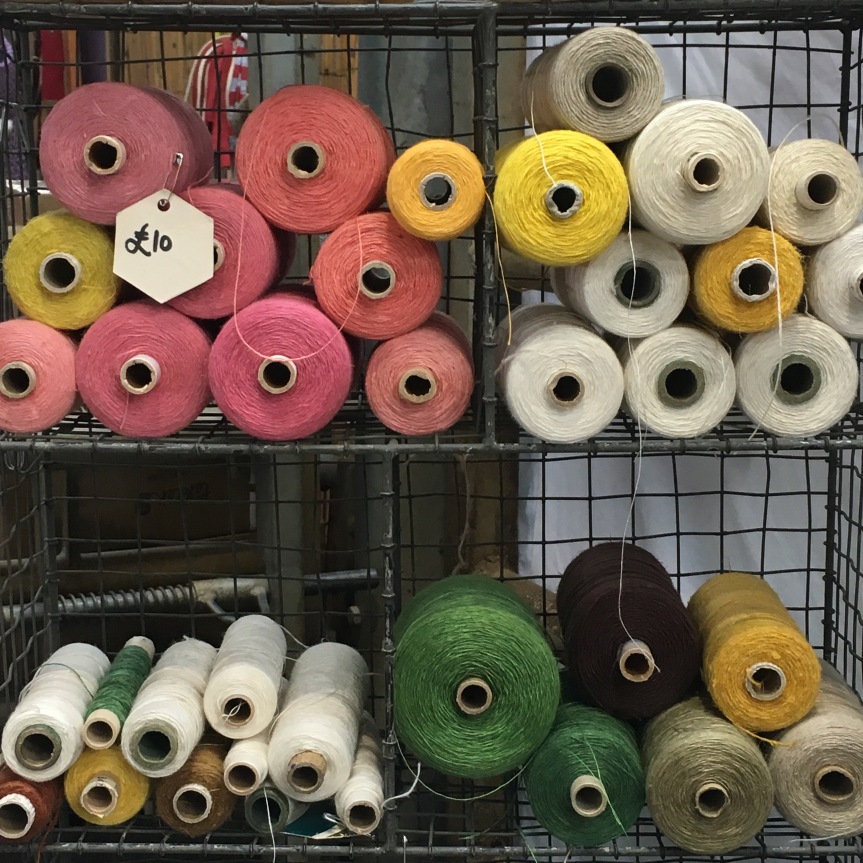
All I can say is there really is something for everyone. I was so impressed by the variety: walking around 150 stalls I never felt like I was encountering the same thing twice, because everything was unique, which was lovely to see. I love that I came away with a mixture of yarns, books, kits, felting and different bits and pieces.
Favourites that I couldn’t quite justify buying / afford include:
Ashford
As I mentioned above, I’ve been thinking of branching into the world of spinning for a while and, with the purchase of four fleeces, now seemed like as good a time as any to get myself a spinning wheel. So, we spent a good while at the Ashford stall, chatting to the staff, taking their advice, and having a go on some of their spinning wheels. I couldn’t really justify buying one there and then, but I have since come home, done my research and am now the proud owner of an Ashford Joy 2.
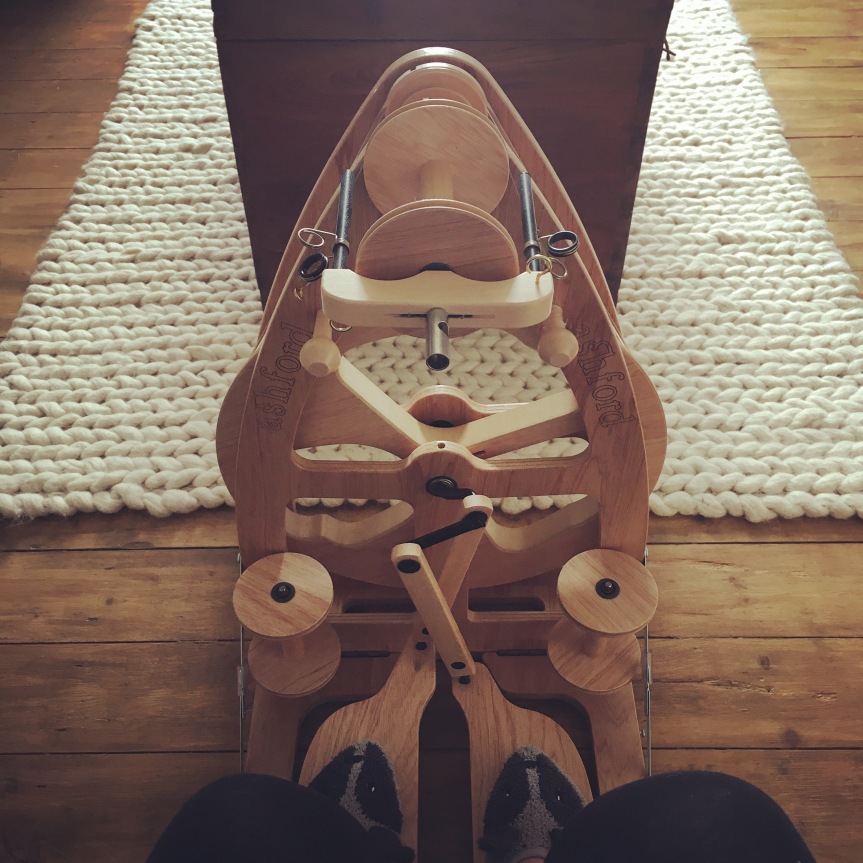
John Arbon Textiles
I fell in love with the gorgeous colours of the Harvest Hues Tops and, I’ll be honest, it took real willpower to leave it behind. I wandered back and forth to this stall numerous times throughout the day, hovering and caressing the soft merino tops like a crazy lady, before reluctantly telling myself a firm ‘no’. Maybe once I’ve had some spinning practice I will treat myself at a later date…
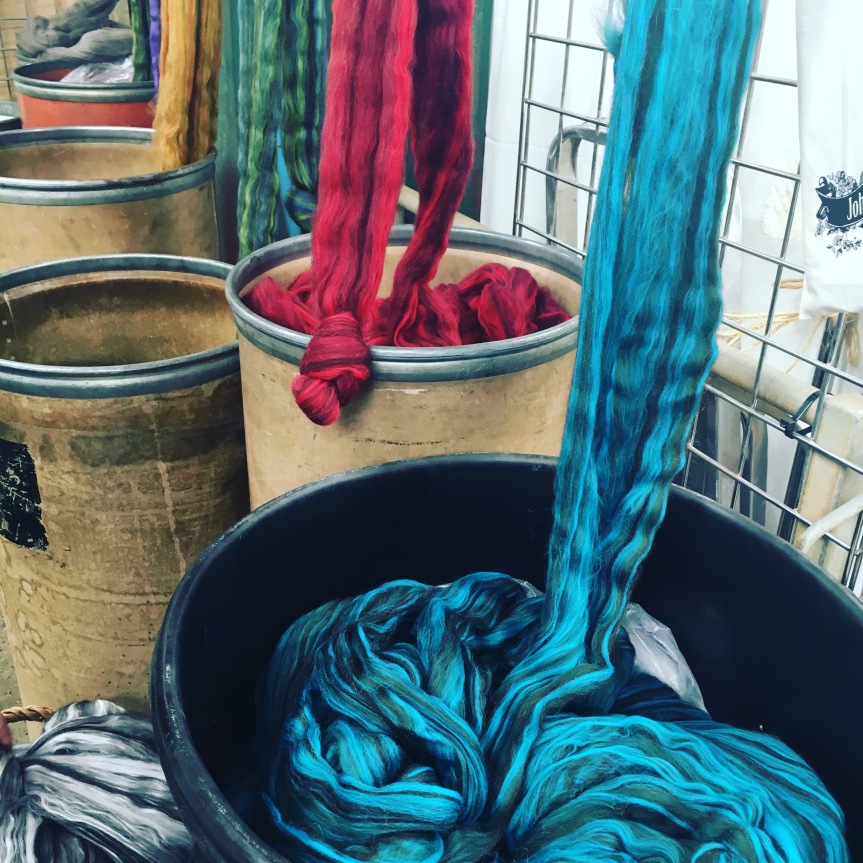
Jem Weston
I loved the bold colours on Jem Weston’s stall, and I was particularly tempted by her squirrel blanket.
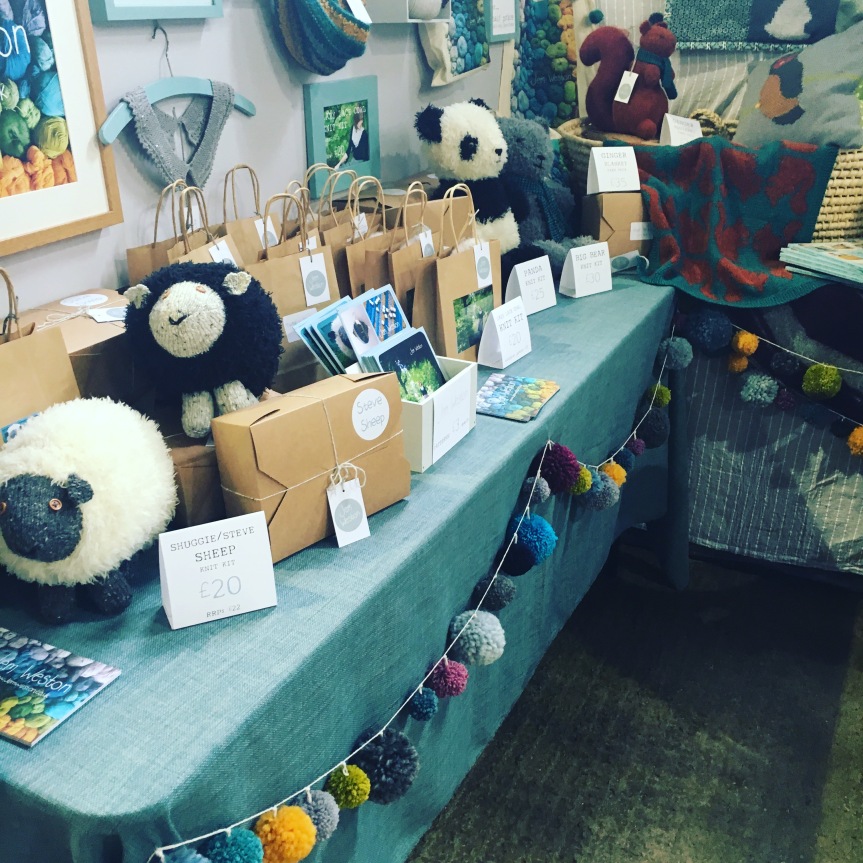
Bigwigs Angora
Not only were the angora bunnies gorgeous, the yarn was so soft and, sold in cute little yarn cakes with bunnies printed on the label, I was very tempted.
Spin City
The stall was just so colourful and bright, I instantly felt drawn to it. The handmade drop spindles featuring real pressed flowers, candy sprinkles and other delights were eye catchingly beautiful; and the fibre was also a serious temptation. Again, because I’m just a beginner, I couldn’t justify buying expensive drop spindles and fibre, so I opted for some cheaper options and may have to return when I’m a bit more experienced.
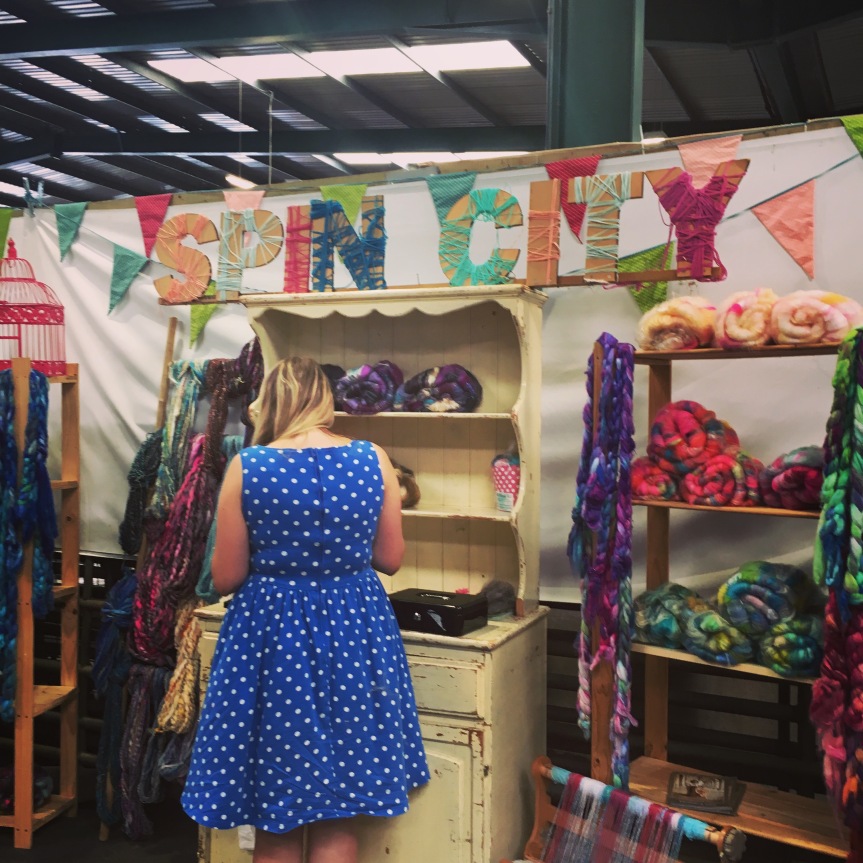
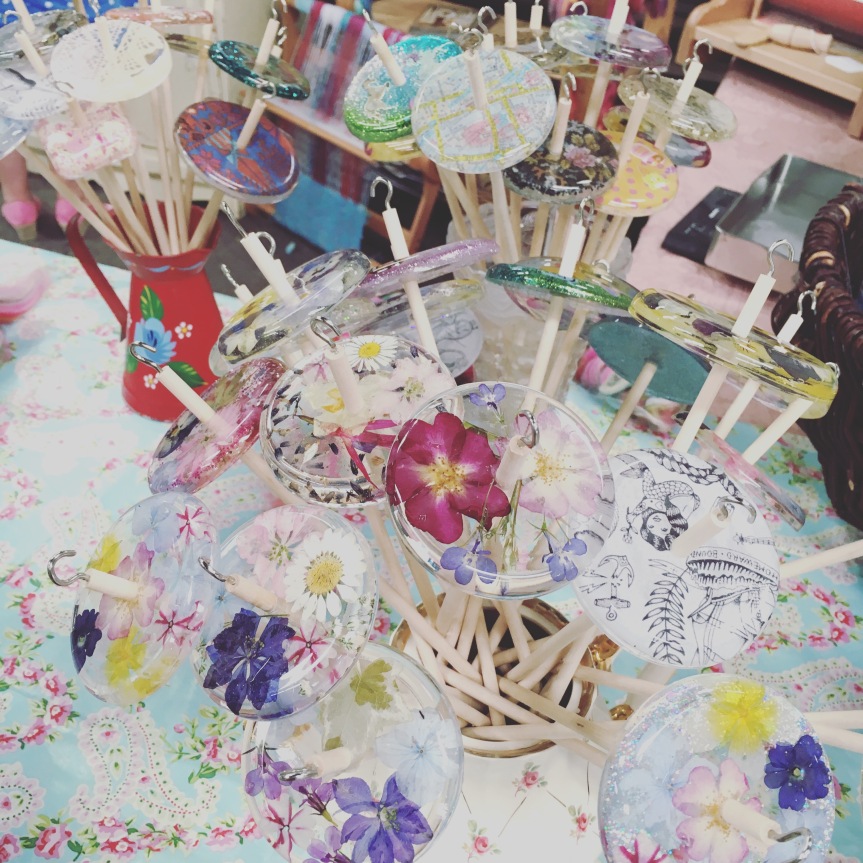
Having only gone along to one day of the festival, I feel that one full day was enough time to comfortably get around everything. I was there from 10am until about 5.30pm, stopping only for some lunch, and by the end I was basically wandering around checking if there was anything I’d missed. I left feeling satisfied that I’d seen everything I wanted to see. So, if you’re happy to be on your feet and be busy for most of the day, I’d say you could manage it in one day. The only thing that I feel I missed out on was one or two of the workshops / demonstrations that I didn’t have time to fit in that I’d have liked to see, but it wasn’t worth buying an additional day ticket for that alone.
If you’re more into taking your time, covering all the workshops and demonstrations, and stopping for a cup of tea here and there along the way, you might benefit more from the two day ticket – which is probably what I’d have gone for if I had all the time in the world but, being a nice wife, I didn’t think it was fair to drag Alex around a wool festival for two days of our holiday!
THE BANK BALANCE OBLITERATION
For the health of my bank balance, I think it was a good thing that I only went for one day of the festival!
I was advised by a local in Cockermouth the night before the festival that I should make sure I walk around and see everything before I start buying so that I could prioritise what I wanted most. I did that (and I would definitely recommend it), but even still, I managed to buy a LOT of stuff! I think because it was my first wool festival, I went a bit crazy. But, I am 100% happy with everything I bought and, if left to my own devices, I could have bought a lot more!
Here it is:
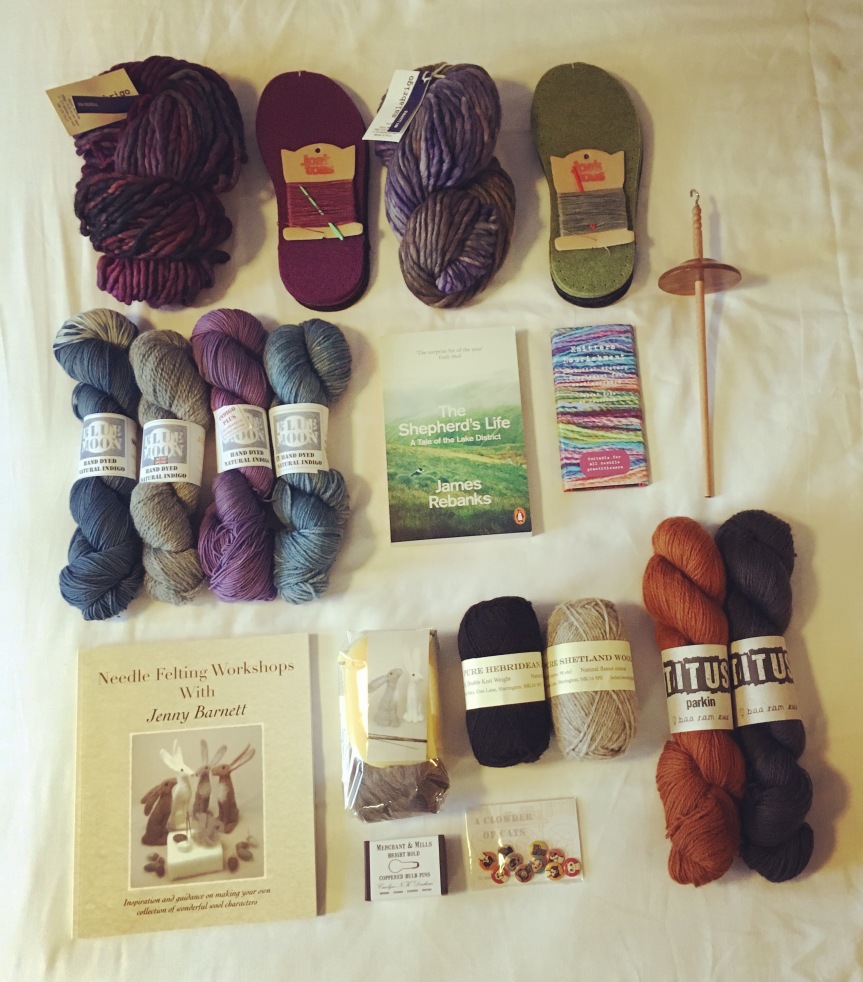
From top left:
- Two Slipper Kits from Joe’s Toes. This was such a colourful stall, I couldn’t resist; and once I spotted these slippers I knew I had to have them. I’m thinking Christmas presents.
- Four hanks of Blue Moon Indigo Yarn from The Border Tart. Two are 4 ply Merino sock yarn; and two are DK Bluefaced Leicester. The stall was full of delicious blues and purples, and the lady on the stall was lovely too. I spent the most money in one go at this stall – everything was beautiful. I wish I’d taken a picture of the actual stall; it was a sea of blue and purple.
- ‘The Shepherd’s Life: A Tale of the Lake District’ by James Rebanks. I’ve been wanting to read this book for a while having heard several good reviews; and what better time to buy it than at a wool festival in the Lake District? It had to be done.
- ‘Knitter’s Nourishment’ dark chocolate with raspberries, from The Border Tart. Just because…
- Lovely wooden drop spindle with polka dot detail. You can’t see it well in this picture, but it’s actually very pretty! This was a last minute purchase right at the end, from Belinda Harris-Reid.
- Needle Felting Workshop book and starter kit by Jenny Barnett. Jenny’s felted creatures were absolutely gorgeous; I’d have bought them all if they weren’t so expensive. I had to settle with a starter kit so I can give it a go myself instead. I’ve never felted before, but Jenny’s creatures were just so cute that I felt inspired to give it a go. I have to say, I was also rather touched by her motivating ‘You CAN make these’ sign featured within her display – I thought it was lovely that she was so encouraging and happy to promote the teaching of the skill to others; I think it shows a real love for the craft that she is so keen for others to learn rather than thinking only of her own gain and focusing solely on selling her own pieces.
- Coppered pins from Beyond Measure. I love copper things, and these will make good stitch markers, which I was in need of.
- Pure Hebridean DK Wool and Pure Shetland DK Wool… Because I couldn’t resist buying wool from the stalls that had accompanying sheep. It’s just so lovely to see the sheep and the yarn side by side!
- ‘A Clowder of Cats’ buttons from The Border Tart. Because, cats.
- Two hanks of Titus Yarn in ‘Parkin’ and ‘Coal’ from Baa Ram Ewe, a blend of Bluefaced Leicester and Alpaca. I think this purchase has the most reasoning behind it. Baa Ram Ewe is a yarn shop based in Leeds that I’m familiar with, and I just loved how ‘Yorkshire’ everything was. The name of the yarn – ‘Titus’ – carried particular significance because it refers to Titus Salt of Saltaire, a Victorian model village near Bradford, which we had been to visit earlier that week. It’s such a beautiful place: the old mill, the houses, and the neatly laid out streets… It’s definitely one of my favourite places Alex has taken me on our trips to Yorkshire, so I felt that this yarn would be the perfect memory of our holiday. As well as that, Alex really loves Parkin so I was drawn to that particular shade. I thought I could knit something for him with it.
In addition to everything listed, we of course, also bought our four fleeces: a Jacob, Hebridean, Ryeland and Herdwick.
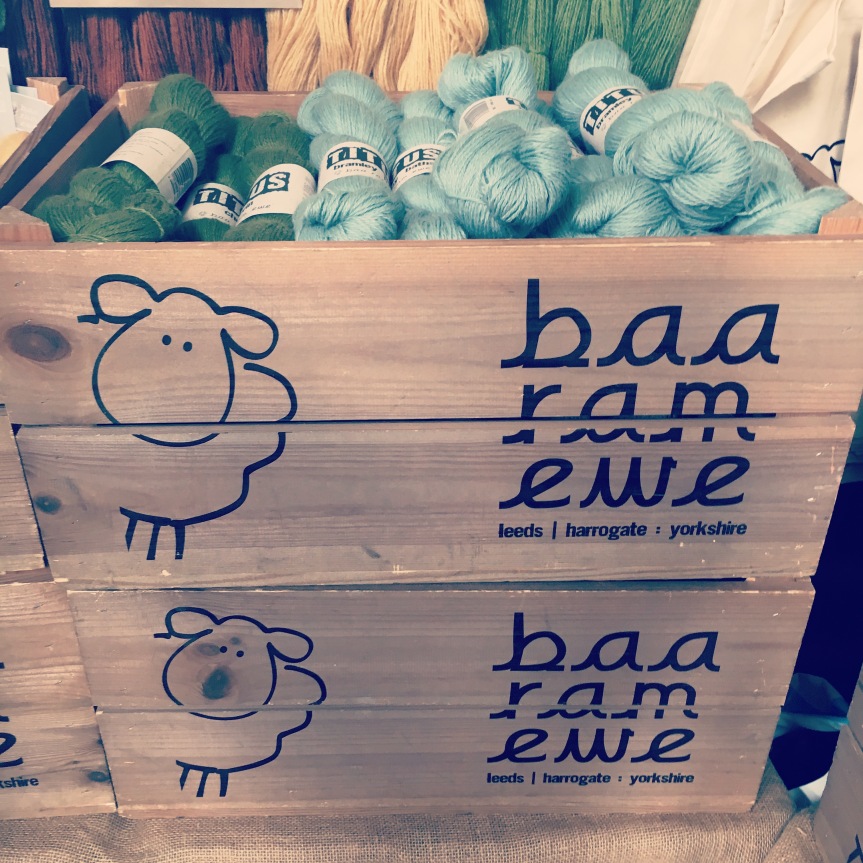
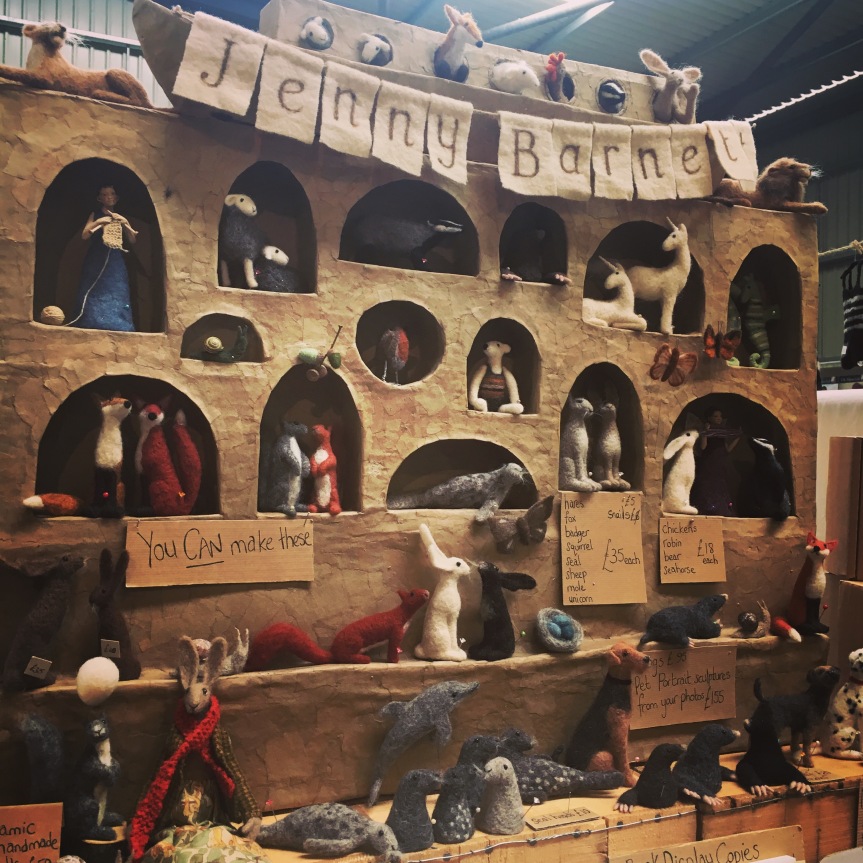
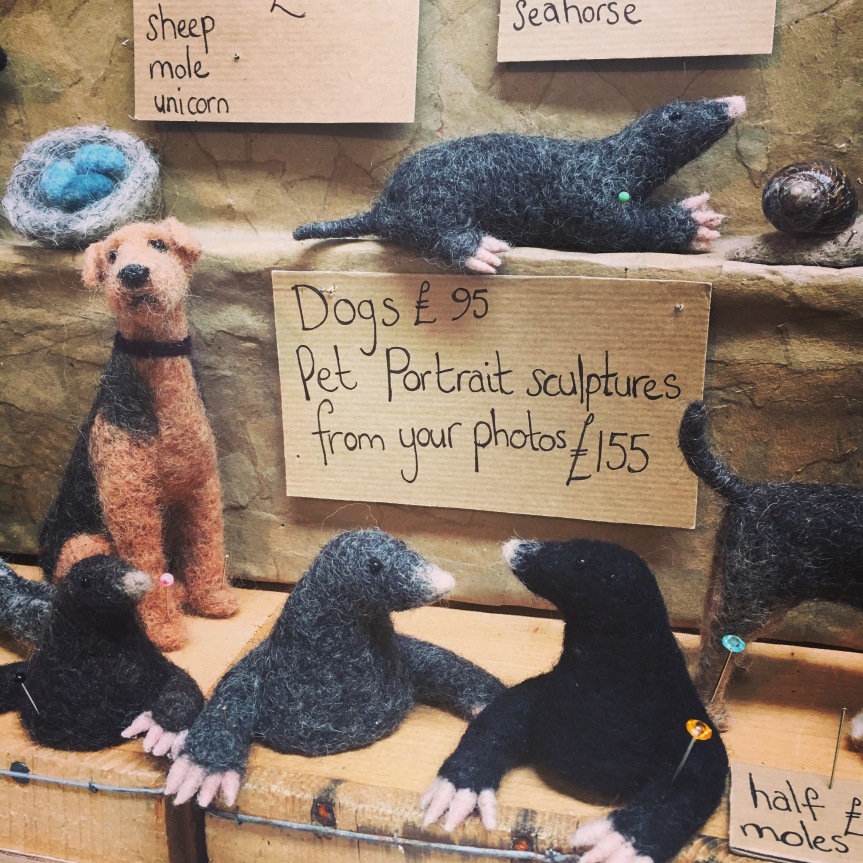
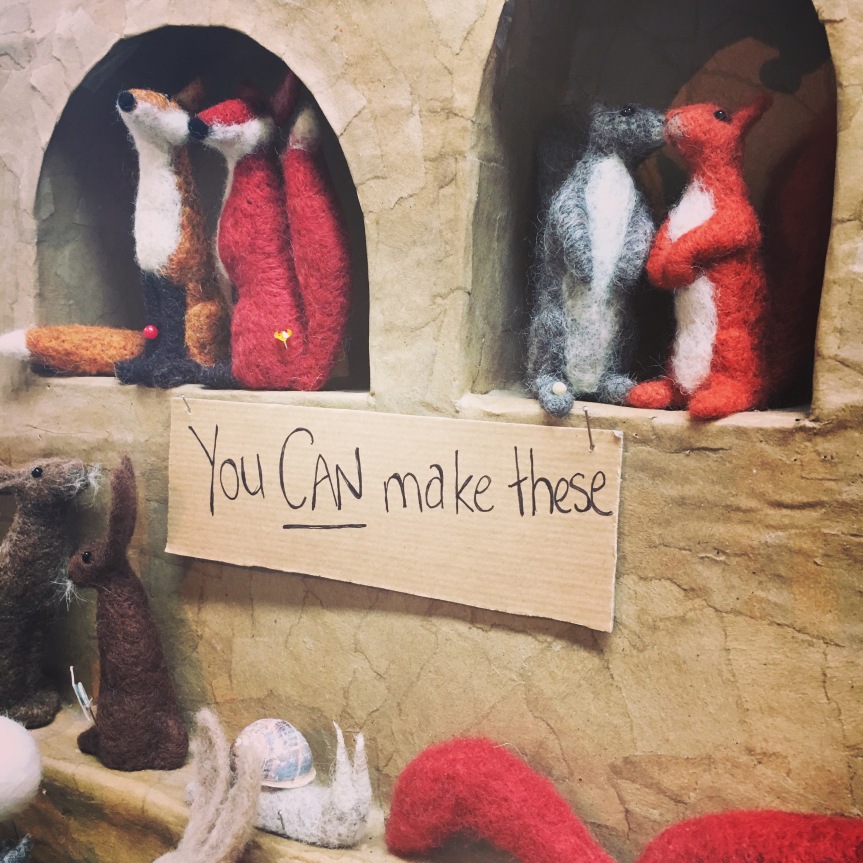
Overall…
If you haven’t picked up the message already, to sum up: I had the BEST time at Woolfest, and I would wholeheartedly recommend a visit to anyone in the area (or, like me, even if you’re not really in the area – it’s worth a road trip!)
I am a total wool festival convert; and I want to quit life and live a Clara-Parkes-in-Knitlandia existence, travelling the world going from one wool festival to the next…

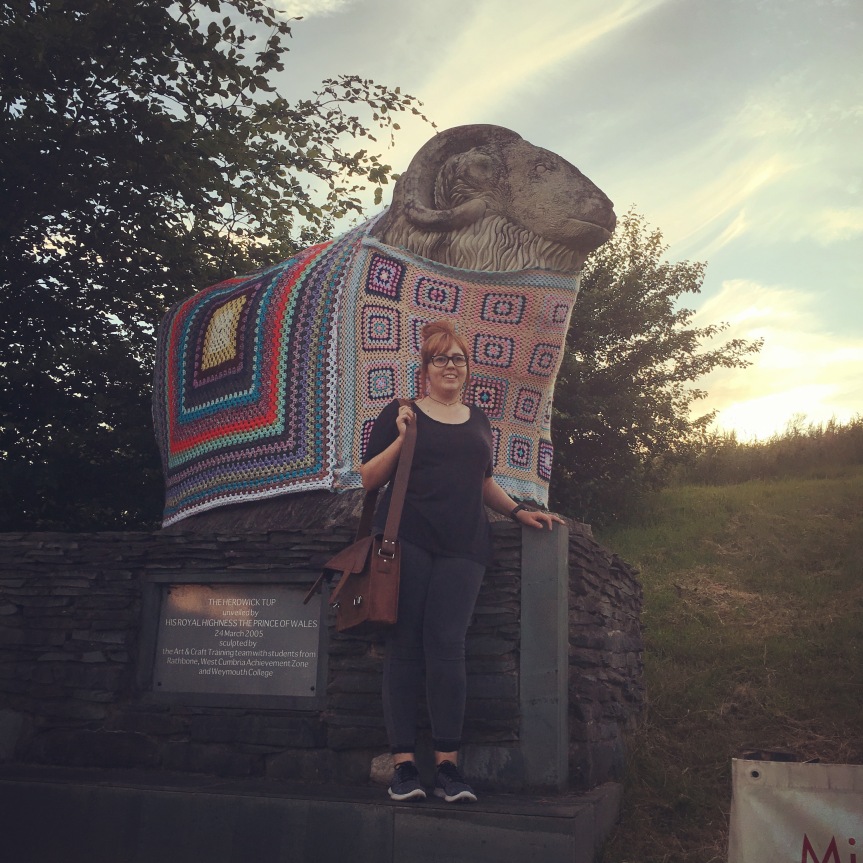
What a lovely post! I love all the sheep — I can totally relate about being the adult at the petting zoo! Woolfest sounds (and looks!) wonderful. Can’t wait to see what you do with those fleeces!
LikeLike
Thanks 🙂 Glad I’m not the only adult going to petting zoos! Will definitely be posting on my progress with the fleece – still currently at the washing stage!
LikeLike
Hi Hannah, I’ve just read your blog about the Cockermouth “Woolfest” and being the daughter of a Carding Engineer I was reminded of the smells and sounds of being in a wooden mill as a little girl. Wonderful memories and the atmosphere of the place you’ve conjured up amongst your spellbinding writing is truly breathtaking. Lovely bedtime read – thanks xxx
LikeLike
Thanks Emma 🙂 That’s interesting that your dad is a Carding Engineer – in the same trip we went to Woolfest, we also went to the Manchester museum of science and industry where they had all the old mill machinery on display, all in full working order. It was fascinating to see it all in action, from carding through to woven fabric. xx
LikeLike
I must go next year! Wonderful reading about your visit. My mouth is watering…
LikeLiked by 1 person
Glad you enjoyed reading – definitely recommend a visit at some point if you get a chance. I’m already planning my return next year…!
LikeLike
I would love to experience this but I live way too far and I doubt the other half would be so willing to come with me :(. Looks absolutely amazing and I am quite glad you made such a big post very interesting read!
LikeLiked by 1 person
Thanks 🙂 You should try looking for wool / knitting festivals going on near you instead – there are quite a few throughout the year in various places across the UK. I’m planning on going to the Inverness knitting festival next – it’s at the end of September, and Inverness is only a few hours away from me (one of the few places I’m relatively near to in Aberdeen!)
LikeLike
Like you this was my first visit to Woolfest, my other half came too but with idea of leaving me there while he went off elsewhere. He stayed with me and took lots of photos. I also met some friends in person for the first time who I had only known through the Internet.
Looking at your purchases some of mine are almost identical….drop spindle and sock soles.
We had two day tickets…spent all of Friday there and returned on the Saturday, just to get a few more things.
I loved it so much the B& b is provisionally booked for next year.
Thank you for sharing your day at Woolfest.
LikeLike
Glad you also enjoyed your first visit to Woolfest. I, too, am planning to go back again next year – a friend of mine who is also into knitting and crochet has asked if we can go together, so the plans are already in the making!
LikeLike
What a great post – as a stallholder (feltmaker) I can tell you that the organisers are lovely and it’s a terrific show to be involved with. I agree about Jenny Barnet’s needle-felted creatures, they are absolutely beautiful; I hope you enjoy making yours – my number one tip for needlefelting is to use a lolly stick or bamboo skewer to hold down your project so you don’t stab yourself.
LikeLike
I can imagine that it must be a lovely event to be involved with as a stallholder – there was such a nice atmosphere and I saw a lot of the stallholders visiting the other stalls and chatting to each other about their work which was nice to see. Thank you for the felting tip – I’ll certainly bear that in mind and give it a go, we’ll see how I get on… It will be a strange experience given that the usual aim is to avoid felting at all costs when washing yarn / knitting etc.!
LikeLike
Like you, this was our first visit to Woolfest .we thoroughly enjoyed it enjoyed seeing the various breeds of Sheep I have a small flock of Hebrideans myself I have really enjoyed reliving my visit and so has my daughter Thank you
LikeLike
Glad you enjoyed your first visit to Woolfest too. It’s so nice that you have your own small flock of sheep, and the Hebrideans are lovely – those horns! and lovely black fleeces! I’d love to have my own sheep someday.
LikeLike
What a brilliant post Hannah. You’ve really echoed the feel and ethos of the show. As a Stallholder we can confirm that it is a wonderful show and would recommend it as a fabulous place to visit for all the family. I was born and brought up in Bradford so wool is very close to my heart. ( I love Salts Mill too.) Hope that the spinning goes well!
LikeLike
Thanks Chrissie:) I absolutely loved Salts Mill – it’s amazing, and the streets of Saltaire are lovely too. My husband is from Huddersfield, so we’re in Yorkshire fairly regularly and he takes me to the most lovely places – on the same day we went to Saltaire, we also went to Haworth which I loved too. I love that the textile history and the mills are just everywhere and there’s so much to see – it’s a good part of the country to live in if you love wool!
LikeLike
Thanks for your super report on Woolfest I was with you at every stage of your visit . We have been to Woolfest about 5 or 6 times but we couldn’t make it this year. So I feel as I’ve had a wee glimpse of it all from this year thanks to you !!
LikeLiked by 1 person
What a grand read. I found your blog via instagram as you’ve just liked my photo of the yarn I’ve just got from Hooligan Yarns. I think you’d love this yarn as the sheep who produce it are all rescues and each one is named individually on the yarn.
This was just such a good read – as if I was there with you. I must now follow your blog and see how you get on with those fleeces. It’s something that appeals to me too as I’ve recently become obsessed with only using British (often undyed) wool.
Thanks,
LikeLike
Thanks for your nice comment – I’m glad you enjoyed my post!
I was actually really happy to come across your photo from Hooligan Yarns – I’ve always thought it would be a really good idea to be able to buy yarn and know which sheep it came from, with a picture and some info about it. I don’t think most people give enough thought or have enough awareness of just where their yarn has come from, how the different breeds make different textured yarns and what’s involved in the process – so it was really lovely to see somewhere actually selling yarn like this!
I’ll be keeping my blog updated as I make progress with my fleeces – sadly things have been a little slow as of late with limited spare time, but the fleeces are all washed, ready for carding and spinning so I’ll hopefully have some progress to share in the near future!
Thanks for reading. 🙂
Hannah
LikeLike